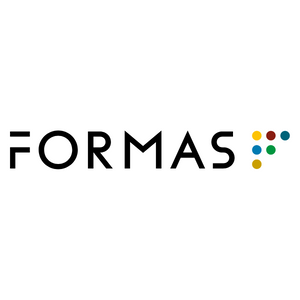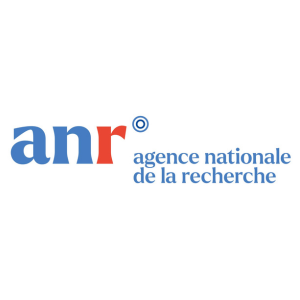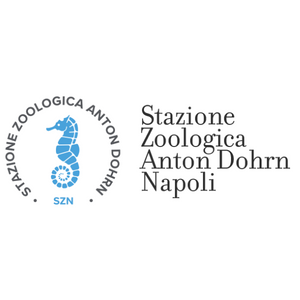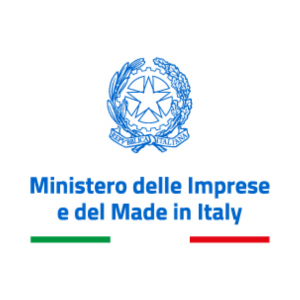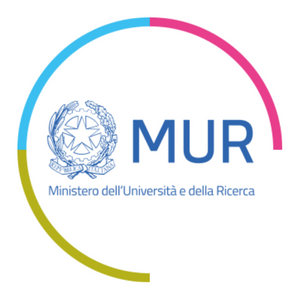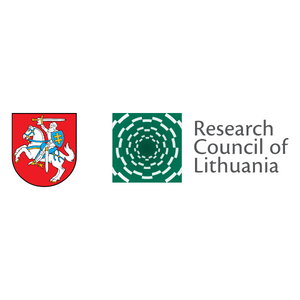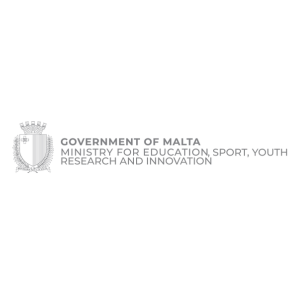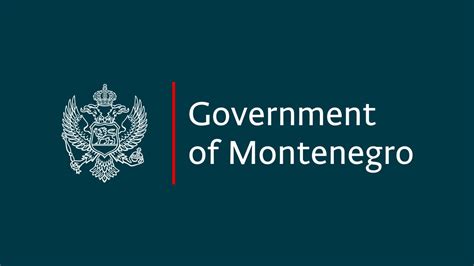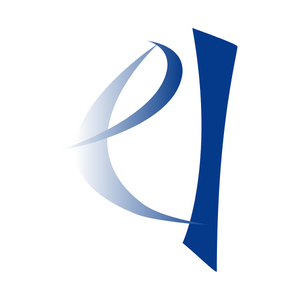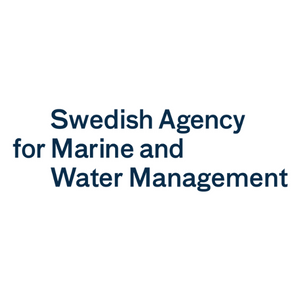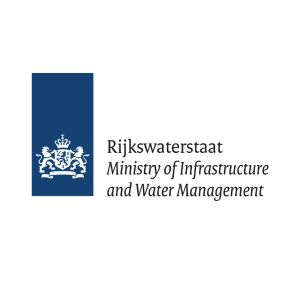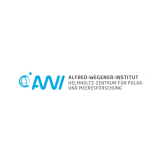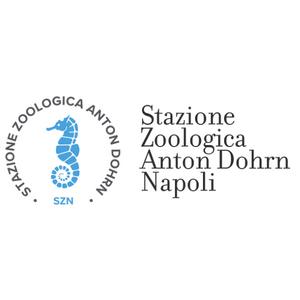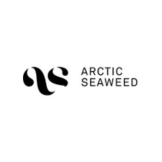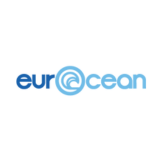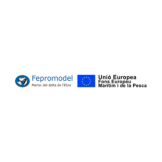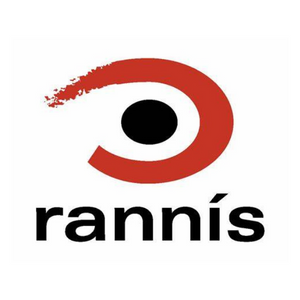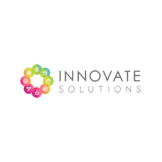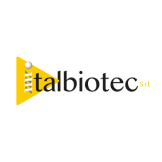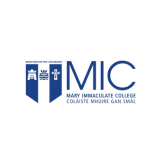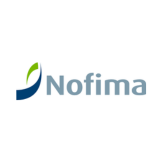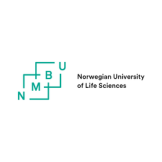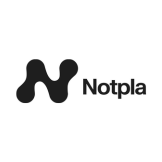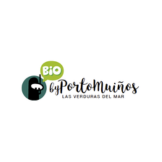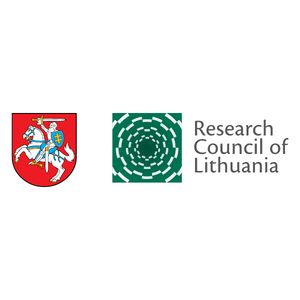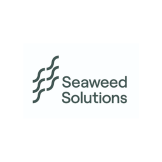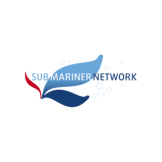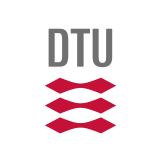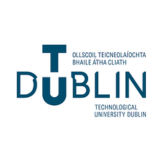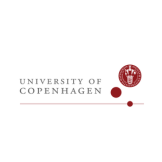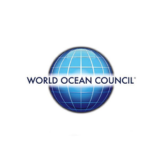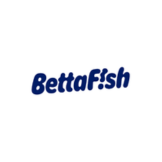- Home
- Events
Upcoming events
'Acqua Alta' Fixed Platform
National Research Council

Francesco Falcieri francesco.falcieri@cnr.it
2025 Intervention Area: Blue Bioresources
Intervention Area: Blue Bioresources
This Intervention Area addresses R&I needs in support of a just transition to the sustainable production and utilization of blue bioresources, with emphasis on production and processes that minimise the environmental impacts while meeting the demand for healthy and affordable blue food, feed, and other biobased products.

Background and rationale
The EU Green Deal sets the context for Europe’s blue economy to become sustainable and climate-neutral by 2050. The Blue Bioeconomy represents an important component of the broader blue economy, delivering food, feed and bio-based products for internal and export markets. With the completion of the Horizon 2020 BlueBio ERA-Net in 2023, the SBEP becomes a key implementing mechanism in Horizon Europe for blue bioeconomy R&D. To achieve sustainability, it is important to consider all stages of the bioresources value chain, from production (capture fisheries, aquaculture etc) to seafood processing, extracting value from waste streams, developing new types of biomasses, new food and non-food products, as well as advanced extraction technologies such as those used in biorefineries. Cooperation will be sought with the FutureFoodS partnership, which will focus on the post-farming and -fishing part of food systems.
Key considerations to be taken on board in this Intervention Area include the importance of engaging with industry and stakeholders and if relevant, the application of multi/trans-disciplinary approaches to address complex challenges, including social sciences and humanities.
Key thematic areas
Sustainable Fisheries and Harvesting
Overexploitation and the cumulative impact of overfishing with the effects of pollutants, climate change and other drivers on susceptible species and ecosystems is leading to unsustainable scenarios for the next decades. To bring Europe's fish stocks back to sustainable levels, there are important challenges remaining. More food, feed or biotic resources for other purposes can be obtained from more targeted fisheries and harvesting by improved management of overfished stocks, optimized fishing technologies and practices to reduce bycatch and discards, and increased fishing and harvesting of underutilised species (i.e., zooplankton, other invertebrates, macroalgae). A forward-looking ecosystem-based management (EMB) approach under EU legislation yet tailored to local conditions will reduce adverse impacts of fishing and harvesting on marine ecosystems, particularly sensitive species, and on vulnerable habitats. The sustainability of mesopelagic fisheries is still being assessed and there is a unique opportunity to ensure that EBM is embedded from the outset. New digital tools such as remote electronic monitoring systems, catch reporting using mobile applications, ecosystem modelling and artificial intelligence tools can optimize both small- and large-scale fishing operations. At the same time such technologies can enable data collection and analysis that can support development of sustainable management practices, while providing full traceability for our seafood. Assessments and solution scenarios should consider the impact and social implications of combined drivers such as habitat degradation, pollution, warming, water stratification and acidification, as well as their effects, such as changes in ecosystem composition, higher frequency of toxic algal blooms and alterations with species migration and phenology.
Activities should address the following aspects:
- Integrated approaches to innovation for fishing vessels to improve vessel operations and practices including technology for e.g., location (also to contrast illegal fisheries), and water characteristics, catch logistics, while reducing the use of fossil fuels.
- Exploring and co-developing with industry the potential for new fishing techniques, technologies, and new resources for small-scale fisheries, and seaweed harvesting.
- Research to inform policy options and management of migratory fish stocks that spend different parts of their life cycle in different jurisdictions. This is a critical issue for the EU Common Fisheries Policy and co-management of stocks between EU and third countries.
- Supporting the application of ecosystem-based management approaches to inshore and small-scale fisheries management.
- Understanding the impacts of climate change and human activities including pollution on commercial fisheries, fish stocks and other species with commercial potential.
- Understanding cross-compliance, alignment and trade-offs between fisheries policy and management with other policy domains (Marine spatial planning, marine strategy framework directive, The Water Framework Directive ) and the implications of measures associated with the EU Nature Restoration Law on fishing and fishers.
- Technological advancements to preserve the nutritional value and use for new types of catch or harvest.
- Increased R&I efforts to improve the understanding of species’ role in the trophic webs, as well as their growth potential as seen in an integrated sustainability and biodiversity-resilience perspective, including the knowledge in concrete management solutions (based on managers’ needs).
- Understanding the social and economic drivers of change in commercial fisheries to inform both fisheries, economic and regional development policy and planning.
- R&I that supports new digital tools for monitoring for well-informed and timely decision making and sustainable management considering the impact and societal costs of stressors such as habitat degradation, pollution, and climate change.
- Development of more selective fishing gears that reduce environmental impact, particularly in the bottom-contact fisheries, and for harvesting new species including macroalgae. Focus can also be on improving fish welfare and increasing traceability.
Aquaculture
Production of safe, secure food and sustainable bioproducts through aquaculture, has a margin for improvements in respect of diversification, competitiveness, and environmental performance. Aquaculture production should be rethought to satisfy growing consumer demand for blue food, as well as the need for innovative blue bioproducts, while enhancing the social, economic, and environmental sustainability and carbon neutrality of the production. This requires targeted technological advancements and diversified production solutions also considering regional and local differences throughout Europe. Integrated multitrophic aquaculture (IMTA), off-shore production, closed systems, or land-based infrastructure with use of recirculating aquaculture systems (RAS), are options for culturing of established and new species. Diversification of species, in particular the expansion and production of organisms of the primary and/or low trophic levels, face several challenges that need technological advancements. For macroalgae there is a need for R&I that supports spatial considerations as well as new offshore production techniques that require further development and facilities, including larger-scale farms, mechanisation, and methods for further processing after harvest. The new and modified technological and digital systems should favour and promote the health and welfare and quality of the farmed fish.
Activities should address the following aspects:
- Challenges and opportunities associated with further development and expansion of seaweed production, including but not limited to environmental concerns, e.g., light, nutrients’ uptake, vectors for diseases, parasites and spread of invasive species; risk of genetic impact on wild seaweed populations; challenges of insufficient seed quality and varying nutritional levels; food safety challenges due to bioaccumulation of heavy metals; new methods for processing harvested seaweed, taking into account the subsequent value chain (e.g. through biorefinery).
- Development of biologically, technically, and economically feasible onshore recirculating aquaculture systems opportunities for fish, shellfish, and seaweed.
- Challenges and opportunities associated with mollusc production, including but not limited to algal blooms as potential threats for food safety; cost/benefits for longer distance offshore production.
- Innovative alternative solutions to produce established and new species, including integrated multitrophic aquaculture, new systems associated with other economic off-shore activities, closed or land-based systems.
- New high value and sustainable feed sources to ensure sufficient and balanced feeds that promote fish quality, health, and welfare.
- Challenges and opportunities for growth in fed mariculture, including but not limited to sustainable and healthy feed, fish health optimization environmental concerns, and food safety issues due to bioaccumulation and biomagnification of xenobiotics.
Enabling a circular blue bioeconomy
Transitioning to a circular blue bioeconomy, whereby the entire biomass of fish, shellfish and seaweed sourced from capture fisheries and aquaculture is utilised, presents both challenges and opportunities. Current policy and regulation can be a barrier to developing new bio-products from waste or side streams (by-catch, rest raw materials etc.), and there is a growing body of evidence to support policy reform. New, sustainable, high-value products can be developed through a biorefinery approach, by e.g., valorisation of waste streams, and contributes to minimising waste and enhancing the value chain. Further exploration of the synergies between blue (aquatic farming) and green (agriculture) is another opportunity in a fully circular blue bioeconomy. For example, side streams from agriculture could be used in aquaculture or bio stimulants derived from marine sources could be used in agriculture. New solutions are also needed for existing challenges e.g., seaweed as bioplastic.
Activities should address the following aspects:
- Opportunities for developing new sustainable bio-based products (food/feed/chemical/pharmaceutical/material) or services to accelerate the ocean economy and provide solutions for existing challenges.
- Post-harvest or processing technology to overcome sensory and other drawbacks to increase consumer acceptance for new products.
- R&I in support of traceability of bio-based products from marine sources through digitalisation.
- R&I that supports policy reform with respect to regulations on use of waste or side streams for a variety of new bio-based products (food/feed/chemical/pharmaceutical/nutraceutical/material).
Implementation, enablers, and synergies
R&I topics will be formulated for calls for proposals, where projects will be expected to involve a broad range of scientific disciplines, industry partners, citizens, and policy stakeholders order to meet the stated objectives and the quadruple helix ambition. Relevant additional activities could include bringing together diverse marine stakeholder to co-develop objectives, assessing the access and status of research, testing, and demonstration facilities, or supporting the uptake of innovative solutions.
Synergies and complementarity will be sought through dialogue with other relevant and potential overlapping initiatives, particularly EU partnerships Biodiversa+, FutureFoodS, Water4All, and Animal Health and Welfare; actions under the Mission Restore our Oceans and Waters (Mission Ocean); the Circular Bio-based Europe Joint Undertaking (CBE-JU) and Waterborne platform. It is important to ensure that new knowledge, products, or services stemming from Cluster 5 and 6 calls are taken up in relevant blue sectors (by both production and value chain stakeholders).
Outcomes and Impacts
- Examples of outcomes from R&I investment in this area: Sustainably produced, nutritious, affordable and climate friendly blue food; diversification of food, feed and other feedstock for products with focus on lower trophic levels; more healthy food, fish, fish stocks and healthier marine ecosystems; improved production efficiencies, for seafood products; greater understanding of the impacts of climate change and human activities on commercial fisheries and fish stock; value chain approaches; aquatic bio-productions that are regionally adapted, well integrated into area-based management, with more selective and less damaging fishing techniques; deployment of new technical solutions, digital, nature-based and social innovations as well as community-led and purpose-driven technology for the blue food sectors.
- Environmental impacts: reduced overfishing by supporting legislation to reducing fishing pressure on overexploited species; optimized technology for reduced bycatch and disincentivising its exploitation; supporting the industry shift towards carbon neutrality by development of more selective and less energy-consuming technologies and procedures; Reduced impact of fisheries on marine habitats.
- Social impacts: more informed consumers; improved understanding of social and economic drivers of change in the blue bioeconomy and in economic and regional development policy and planning; uptake of innovative fishing gear
- Economic impacts: productive and competitive greening of the fisheries, aquaculture and processing sectors; improved traceability and labelling of blue food; increase in the number of blue-green companies, products, processes and services; reduced import dependencies and strengthened tech industries; policy and management options to inform EU (common fisheries policy) and third-party negotiations in respect of migratory species.
2025 Intervention Area: Digital Twins of the Ocean
Intervention Area: Digital Twins of the Ocean - Development and Use
The concept approach of this Intervention Area is the development and validation of Digital Twins of the Ocean (DTOs) at sub-basin scale. It is a multidisciplinary, long-lasting effort involving activities like observation, monitoring, basic research and innovation focusing on the development of digital twinning technologies for spatially limited areas at sea-basin level. The aim is to improve our understanding of the relations and mutual influences (common data, local and global variables) among essential systems at sea-basin level and ultimately support the development of AI-based simulation and prediction capabilities for European oceans.

Background and rationale
The development of digital twins, including DTOs, offers realistic digital representations of assets, processes, or systems in the built or natural environment. DTOs enable users to provide answers to “what if” questions in the context of ocean development, a sustainable blue economy and effective maritime spatial planning. By combining large amount of data and information with data-driven models and observations for relevant sea systems and their interdependency, DTO applications will allow for user-driven scenario building of effects of natural processes and anthropogenic activities on the marine environment. This ability will enhance planning rapid responses to unexpected events at sea and provide innovative, interactive, and user-driven tools available to citizens, entrepreneurs, scientists, and policymakers. R&I efforts in this area will also help improving our understanding of the abilities and the limitations of DTO applications as decision support tools and to ensure responsible usage in management decisions.
Actions under this Intervention Area will be dedicated to development and use of DTO systems integrating and observations at sub-basin scale, i.e., spatially limited areas within sea-basins considering also the wider data issues such as collection, treatment, availability, dissemination and gaps. Different types of datasets such as from monitoring, research and observation are included. This will provide accurate information on the limits and knowledge gaps of single/interconnected sub-modules (physical, biogeochemical, ecosystem, socio-economic) and details for integrating spatial hierarchical models.
This Intervention Area complements the development of the European Digital Twin of the Ocean (EDITO). The EDITO is a core element of the Digital Ocean Knowledge System and flagship initiative of the EU Mission Restore our Ocean and Waters with its core data infrastructures and ocean services, including Corpernicus Marine Service and EMODnet. The activities in this IA are closely linked with the assessment and improvement of the EU observing system under EOOS framework, and it will require deployment and coordination with ocean related ESFRI Research Infrastructures.
Key thematic areas
The concept approach of this Intervention Area – the development, validation, observation and use of DTOs at sub-basin scale – is a multidisciplinary, long-lasting research and innovation activity. The initial focus will be on some spatially limited areas at sea-basin level at low TRL to improve our understanding of the relations among the essential processes and system components of the marine environment. The aim is to develop holistic types of DTOs that include and model all essential processes and their interactions: circulation and currents, waves, tides, interaction with the atmosphere, but also seabed and sediments, coasts and estuaries, animal and plant life, the ecosystem, and socio-economic activities and impacts. Considering that a major requirement for the development of any DTOs is the availability of appropriate and high-quality data, this intervention area also covers data acquisition from observations, quality control, storage, availability, dissemination, and analysis and incorporation of data into the DTOs through AI and data assimilation (DA).
DTO applications for scenarios should connect to the marine environment but also to blue economy activities at local level. The development of validated, fit-for-purpose DTOs at sub-basin scale will include several phases, notably the selection of targeted sub-basins, the collection of relevant data for these areas, the development of process-driven, data-driven dynamic models representing the essential processes that characterize these basins, and the evaluation of the mutual interactions among the systems. Further steps include the combination with relevant models, the development of digital systems and new sensors, fit-for-purpose observations, connecting and contributing to a data-lake for storage of constantly increasing and heterogeneous data (to eg. validate models and feed AI simulators), the development of the framework for computation of multidisciplinary equilibrium among the systems, and numerical solution via large High-Performance Computing (HPC) architectures. Finally, this DTO approach will require constant test and validation of models' predictions, delivering an assessment of risks and uncertainties as well as specialized tools for access, rapid analysis, and dynamic visualization of the data and the predicted solutions.
Activities should address the following aspects:
- Mapping and understanding user requirements for models, based on input from relevant communities (research, business, management), and turning this knowledge into applications based on stakeholder requirements.
- Assess data availability from multiple sources at regional level and identify possible data gaps that limit DT development.
- Using available data for uncertainty quantification of the data and models relevant to selected use cases at a sub-sea-basin scale.
- Demonstrate new sensors and innovative approaches to fill identified data gaps to provide more and more accurate information on sub-systems.
- Understand the trade-offs and risks associated to the holistic management of selected areas and map the needs for advancing fit-for-purpose observations and models where existing models do not apply.
- General frameworks for exchanging information between models.
A close scientific and expert cooperation and coordination is needed to ensure appropriate timing, complementarities, convergence, and interoperability with other ongoing and planned DTO initiatives, notably under the EU Mission “Restore our Ocean and Waters”, Horizon Europe actions (Cluster 6), national projects, and DTO core infrastructures.
Implementation, enablers, and synergies
In addition to cash calls for R&I proposals, there is good potential for in-kind contribution and engaging observing systems and national monitoring efforts to ensure harmonization of data collection and better coverage and frequency of measurements to improve the fundamental modelling.
Relevant SRIA enablers for achieving the targets include FAIR data; social sciences and humanities (SSH) integration and social innovation, considering the socioeconomic and coastal community aspects of area specific modelling; training activity that address human capacity needs; social innovation and rules for practical applications; sustainable financing of infrastructures.
Synergies will be sought with activities under Horizon Europe, including EU Mission actions, Copernicus, EDITO and EMODnet, EOOS UN Decade, relevant RIs, and other EU and national/international projects and activities.
Outcomes and Impacts
- Examples of outcomes from R&I investment in this area: Sub-basin ODT; Intelligent environmental monitoring systems and new sensor technology; synergies between available data networks.
- Environmental impacts: Planning and adaptation strategies put in place to tackle environmental and climate change.
- Social impacts: better stakeholder engagement (incl. citizens), inter-institutional collaborations & investments.
- Economic impacts: Higher use of intelligent decision support system (DSS) by industry, municipalities and coastal communities, and potential for circular business models.
2025 Intervention Area: Managing Sea-Uses
Intervention Area: Managing Sea-Uses
This Intervention Area addresses the need for innovative tools and approaches to sustainable, ecosystem-based planning and management of sea-uses, interlinking maritime spatial planning (MSP), the Marine Strategy Framework Directive (MSFD), Common Fisheries Policy (CFP), and the marine protected areas (MPAs) with a focus on the regional dimension.

Background and rationale
Planning and managing sea-uses are essential for sustainable resource management, conservation of marine ecosystems, conflict resolution, disaster risk reduction, economic development, and addressing climate change challenges. By adopting an integrated and holistic approach to planning and management, societies can ensure the long-term health, productivity, and resilience of the ocean. This is particularly relevant in coastal areas, where enhanced anthropic pressure, intensified land-ocean fluxes of matter and energy and overlapping of multiple human uses and users should coexist with ecosystem conservation goals, aiming at achieving a good environmental status.
The boundaries and operational objectives for sustainable development and Good Environmental Status are defined under the European Marine Strategy Framework Directive (MSFD). Within this framework, ecosystem-based management (EBM) of human uses and Maritime Spatial Planning (MSP) plays an important role in achieving Europe’s objectives of decarbonisation and biodiversity protection by supporting more efficient use of marine space, while reducing conflicting uses and inefficiencies in transport and related facilities (EC COM (2021)240 final). MSP plays a crucial role in defining suitable space for Blue Economy sectors to operate, while assessing and mitigating their cumulative impacts and promoting coexistence with other sea uses.
The overarching goal of this Intervention Area is to support science-based decision making that takes stock of environmental status, the legacy of human impacts, climate change trends, and future scenarios, considering multitude of pressures from uses of marine space and marine resources. The Intervention Area focuses on R&I needs related to Ecosystems-based management and Maritime Spatial Planning, aiming to support cross-border cooperation and management of marine protected areas, innovative tools for decision making that combine data from various sectors, as well as knowledge generation on areas such as Good Environmental Status (GES), focussed on land-ocean fluxes of nutrients and energy and emergent pollutants derived from urban systems, intensive agriculture and industrial activities and on the valuation of ecosystem services, particularly the carbon sequestration capacity of coastal blue carbon ecosystems. The Intervention Area also encompasses reconstructions of seafloor changes in 4D in areas of significant natural dynamic and/or heavy human impact, R&I needs within maritime surveillance, the development of innovative solutions to reduce the ecological impact of commercial ports as well as more inclusive processes for development of decision support-systems. Co-design, co-development, and co-use with MSP competent authorities at national and regional level will be essential to ensure direct capitalization of results and to widen the information basis available to relevant authorities, particularly by including socio economic data sources.
Key thematic areas
1. Fostering the full use of scientific knowledge for effective management and conservation
Assessments of ecosystem health is a prerequisite for effective environmental management and conservation. Innovative research on this topic will provide essential data for the identification of suitable areas for diverse uses, minimizing conflicts and maximizing sustainable development. Ecosystem based management, including MSP, requires high resolution mapping of marine underwater morphology and marine uses and quantification of indicators describing ecosystem status and pressures caused by human uses. The temporal evolution of the monitored variables, either abiotic (seafloor morphology, sediment dynamics, etc.) or biotic (community structure and function) are relevant for MSP, and other marine policies, notably the MSFD. Innovative strategies of repeated bathymetric surveys should be adopted in dynamic coastal and nearshore areas characterized by consistent sediment transport and consequent modification of the sea floor morphology. Scientific knowledge will provide essential tools for the evaluation of ecosystem services and for the maintenance or restoration of their supply. Effective management and conservation of the carbon capture capacity of coastal blue carbon ecosystems will help launching ecologically viable carbon sequestration management strategies within the EU Green Deal policy and to provide the needed knowledge to implement the EU Carbon Removals and Carbon Farming (CRCF) regulation. This thematic area will provide innovative tools for the assessment of ecosystem health and for the implementation of management strategies in complex socioecological systems at the land-ocean interface where intense human-derived pressures (nutrients, pollutants, sound, etc) derived from urbanization, agriculture or industrial activities occur, in close interaction with the Water Framework Directive.
Activities should address the following aspects:
- Research to better implement integrated economical, ecological, and social ocean health indicators into marine ecosystem management tools.
- Provision of essential data for enhanced understanding of marine ecosystems and effective environmental management and conservation and supporting the identification of suitable areas for different uses, minimizing conflicts, and maximizing sustainable development.
- Performing intelligent seafloor sampling surveys and assessing seafloor ecosystem health, damage/degradation of marine habitat and effectiveness of restoration measures.
- Generation of knowledge and tools for improving currently available risk assessment procedures and management strategies for extreme events in the coastal realm.
- Development of suitable ecosystem-based population dynamics models to support management and conservation strategies in the marine domain (considering also ecological connectivity and including MPAs)
- Research focussed on innovative tools for ocean health assessment and for the implementation of management strategies at highly anthropized land-ocean interface ecosystems, including those affected by large inputs from intensive agriculture, highly urbanized areas or industrial activities.
- Research aiming at gaining understanding on the resilient supply of key ecosystem services in complex multi-use and multi-users marine socio-ecological systems.
- Assessment of the spatial extent, carbon reservoir size and resilience and development of effective conservation and restoration strategies in coastal blue carbon ecosystems.
2. Sustainable commercial and industrial ports integrated in the coastal socio-ecological system
The thematic area closely interacts with the Partnership Zero-emission Waterborne Transport e.g. working group, and others, e.g. DUT, CET). Trying to minimize the overlapping between that partnership and SBEP, this thematic area is proposed to restrict its scope to the interaction between ports and the marine environment and to their role within the local coastal socio-ecological system though their interaction with other coastal and marine and maritime uses and users.
Commercial and industrial ports occupy a significant fraction of the littoral boundary in highly urbanized areas affecting coastal diversity being one of the main economic activities operating at the land-ocean interface. They are a source of nutrients, pollutants, energy and alien species entering local marine systems and are key players in the coastal socio-ecological system frequently interacting and generating conflicts with other uses (fisheries, tourism, recreative activities etc). The decarbonisation process of ports may have impacts on the marine environment associated to the development of renewal energy platforms. Moreover, strategic and operational planning of port areas is crucial in determining maritime transport routes and heatmaps and therefore their interactions and potential conflicts with other uses and with marine ecosystems (e.g. NIS, emissions of pollutants, underwater noise).
Activities within this thematic area should focus on:
- Development of new technological and management tools towards zero-waste (including all types of pollutions) and carbon neutral ports
- Adapting port infrastructures to future maritime climate scenarios, including sea level rise and extreme events (Blue infrastructures to be considered)
- Restoration of highly modified water bodies and sedimentary systems affected by port activities
- Investigating innovative Nature based Solutions (see definition NbS) to enhance marine diversity associated with port infrastructures.
- Reducing environmental impacts of port renewable energy systems on the marine environment
- Identifying and testing solutions to improve the coexistence of maritime transport with other uses and reduce impacts on ecosystems within MSP processes at national and transboundary level
- Identifying and testing solutions to improve the coexistence of maritime transport with other uses and reduce impacts on ecosystems within MSP processes at national and transboundary level
3. Enhanced Marine and Maritime Surveillance
Maritime Surveillance includes the protection of marine resources from illegal activities (fishery control, oil spill detection, environmental degradation monitoring etc.), food security, transport safety and the monitoring of critical marine infrastructures (e.g., renewable energy and aquaculture offshore platforms), key issues for a sustainable blue economy. Different observation systems for data acquisition (satellite and stratospheric-platform, including ship-borne observations), sharing and management are the fundamental tools of Maritime Surveillance.
Activities should explore obstacles and opportunities for:
- Integrating platforms and services for maritime surveillance through data sharing between the existing EU and national platforms.
- Implementing platforms allowing the integration of marine and maritime data analytics with socio-economic data.
- Data from maritime surveillance to inform the implementation of monitoring processes.
4. Development of innovative Decision Support Tools (DSTs)
MSP is recognized today as an essential tool to prevent conflict between policy priorities and to reconcile nature conservation with economic development (EC COM (2021) 240 final). Its complexity requires sophisticated tools to analyse and visualise data, assess potential conflicts, and identify optimal solutions. DSTs can significantly enhance the effectiveness and sustainability of MSP processes. By integrating multiple data sources and modelling techniques, DST will allow decision-makers to evaluate different scenarios and provide for a better-informed decision-making by considering the broader impacts and interdependencies among different sea-uses.
Activities should address the following aspects:
- New methodologies for integrating and operationalising socio-economic and socio-ecological aspects in MSP to quantitatively estimate environmental, social, and economic benefits of MSP in present and future scenarios.
- Filling knowledge gaps on pressures, states, and ecosystem functioning, as well as re-use potential of relevant data from existing repositories and broader sources.
- Explore transboundary scenarios and multi-lateral solutions (e.g., international protected areas; protection of highly mobile species and shared stocks and resources; environmental disasters; preparedness to marine hazards).
- Identifying environmental and socio-economic trends and drivers and building scenarios at sea basin and sub-sea basin scale for informed adaptive planning and management.
- advanced models for integrating multiple disciplines to create digital intelligent supporting tools (including Artificial Intelligence based) able to consider environmental processes, anthropogenic activities (coastal and sea uses), socio-economic and socio-ecological aspects. case studies and demonstrators of the concrete added value of the developed DSTs for specific sector planning demands, with a focus on coastal areas and land-sea interactions (e.g., offshore renewable energies, aquaculture, fisheries, maritime transport, coastal and maritime tourism, commercial ports and multi-use of marine space).
- Overcoming technical and non-technical barriers in co-using advanced DSTs in institutional MSP processes.
Implementation, enablers, and synergies
R&I calls for proposals are important to address knowledge gaps, develop solutions, and build R&I capacity within the area. There is good potential for engaging observing systems and RIs through additional activities (in-kind contributions), e.g., in relation to maritime surveillance and seafloor sampling and observation. Development of blue economy sectors and the optimal use of resources etc are addressed in IA: "Transitioning Blue Economy Sectors", and part of other IA's.
Innovative governance and integration of SSH are key enablers to achieve the goals. Research and innovation efforts are needed to address the lack of data standards and challenges of combining data from a variety of sources.
The Intervention Area will build on input from relevant projects under HE (Cluster 6 Destination 1 topics in particular). It will align with EU Missions ‘Restore our Ocean and Waters’ and 'Adaptation to Climate Change' and the DTO initiative. Among European Partnerships Biodiversa+; Artificial Intelligence (AI), data and robotics, Zero Emission Waterborne Transport, and FutureFoodS will be of relevance.
Many organizations and initiatives at global and sea-basin scale are involved in promoting and implementing MSP, including from United Nations to the UNESCO/IOC to executing authorities of the Regional Sea Conventions to national governments implementing relevant European directives.
Outcomes and Impacts
- Examples of outcomes from R&I investment in this area: enhanced capacity for R&I in support of MSP; co-designed AI-based DSTs for MSP; application of DSTs to case study areas/topics; framework conditions for a stronger ocean industry collaboration across sectors; identification of data-gaps; improved MSP plans, transferring DST results in the formal MSP processes & plans; tools for the implementation of relevant policies, strategies and directives; transdisciplinary and socio-ecological approaches for MSP processes at different scales; more coherent MSP in the same sea basin and overall; common tools and decisions and transfer of tools among stakeholders in the involved regions; several regions and MS involved in the process of MSP and development; more climate resilient and ecosystem-based MSP; improved co-design / co-planning, from strategic objectives to specific management measures; skills and education to enable use of digital support tools.
- Environmental impacts: avoidance of negative impacts on environment based on early identification.
- Social Impacts: improved public trust in the research-innovation-management chain; Improved public literacy regarding transformations of the seafloor and water mass.
- Economic impacts: evidence-based decision making that greens the industry; decreased carbon footprint of blue economic drivers.
2025 Intervention Area: Transitioning Blue Economy Sectors
Intervention Area: Transitioning Blue Economy Sectors
The main aim of this Intervention Area is to support the development of blue economy sectors and the optimal use of resources in European oceans and seas in terms of space and material flows while ensuring the conditions for sustainability and reducing environmental pressures.

![]()
Background and rationale
The ocean industries face several common challenges which can be tackled more efficiently by stimulating cross-sectorial technological cooperation and ensure the transitions needed. The key drivers of technological development are sustainability, safety in operation, green and cost-efficient solutions.
Within the broader policy framework of the Partnership, the aim of the Intervention Area is to bolster long-term sustainable purpose-driven technological innovations. The Intervention Area is not limited to any sector or activity but covers the entire blue economy, focusing on the prerequisites for a green and digital transition of these sectors and on the conditions for co-existence and multi-use of activities and infrastructures at sea. Through this Intervention Area the Partnership will support marine and maritime contributions to curbing greenhouse gas emissions towards net zero and solutions for climate related mitigation and adaptation (e.g., Ocean-Based Carbon Dioxide Removal, production of blue renewable energy) that strengthen societal and economic resilience against climate-change impacts and addressing other environmental concerns. The Intervention Area focuses on actions that will bring us closer to sustainability, whether in relation to materials (cf., EU Waste Framework Directive, Critical Raw Materials initiative) and/or helping to minimise conflicts deriving from the demands for space at sea or at the coast.
The activities within the Blue Economy sectors represent highly complex multi-actor social-ecological systems. The transition of these sectors will therefore include broad industrial stakeholder involvement and a diversified funding strategy. Common challenges within all highlighted target areas include regulatory and legal constraints and opportunities, social acceptance of the developments for existing and emerging sectors, socio-economic considerations for a just transition, and broad and inclusive approaches based on principles of social innovation (attitudes and perceptions; learning, networking, and collaboration; and scale, scope, and resonance). Other common challenges are related to corporate social responsibility and social acceptance and license to operate, and the need for new or improved tools and regimes to manage complex safety, security and risk conditions arising from increased co-existence and multi-use structures, including considering biodiversity and cross sectoral issues.
Key thematic areas
This Intervention Area contains two strongly connected sub-areas. There are equally strong linkages with the intervention areas on digital twin solutions, and on marine spatial planning. The focus here is on the material and spatial intervention aspects.
1. Transitioning the Blue Economy through innovations
Actions under this Intervention Area should emphasise technology and process development, solution orientation, and integrated approaches to develop the sustainable Blue Economy in the context of climate change and other environmental challenges. Projects and their clusters should plan a clear path (e.g., value chain perspective) from new knowledge and innovative services and/or products to a possible service offer to end-users and how to address demands by end-users. Actions can also explore opportunities for connections between different functions of activities, private as well as public, in the marine domain.
In relation to the climate, biodiversity and other environmental challenges, there is a need to:
- improve resilience to natural disasters,
- increase natural capital (enhancing marine biodiversity), and
- restore ecosystems (e.g., advance nature-based solutions (NbS) (see definition NbS), and
- to consider safe and acceptable possibilities for the sequestration of carbon in a biotic or abiotic form in the marine domain.
Activities should address the following aspects:
- Tools, techniques, and processes, to facilitate, monitor and/or assess impacts of interventions in the marine domain that address the above, contributing to understanding and quantifying the ecosystem responses to direct and indirect anthropogenic pressures.
- Promoting standardisation in innovation and procurement processes to scale up the application of new solutions at higher Technology Readiness Levels (TRL).
- Developing co-creation and collaboration to enhance understanding for scientists and policymakers to assess overall environmental, social and economic impacts (including multi-use) on the ocean and society.
- Creation of markets and business models: identification of opportunities for profit within appropriate bounds of social license.
The high material intensity of maritime activities, taking account of rapid changes in energy systems requires full consideration of transition to circularity for existing and upcoming sea-based activities. This includes enabling novel materials and technologies for sustainable manufacturing and product life cycle management, as well as ensuring safe and acceptable possibilities for the sequestration of carbon in a biotic or abiotic form in the marine domain. Activities should address the following aspects:
- Decommissioning options in existing and upcoming segments of the transport and energy sectors at meso (type) and macro (sector segment) level,
- Sustainable and cost-efficient solutions for construction, maintenance, reuse of offshore structures.
- Business models for possible investment mechanisms to facilitate the re-use of installations in the marine domain addressed from a legal, environmental, and economical perspective.
- Innovation for minimizing any impact and reducing environmental footprint of new structures, small- and medium-sized vessels and recreational boating, installations.
- Nature-based Solutions: compatibilities and incompatibilities of material use(s) in view of enhancing natural functions using a combination of approaches.
- Carbon: activities and their consequences in relation to sequestration of carbon in the marine domain.
2. Improve co-existence and multi-use infrastructures
In view of the increasing demand for space, activities and functions at sea, multi-use spatial concepts, including multi-use infrastructures, bring a potential for synergistic benefits for associated sectors. At the same time, the risk of conflicts and negative environmental effects needs to be minimised. Any multi-use of installations or space increases the complexity compared to a ‘single-use’ situation and requires cost-benefit analysis to understand and valorise its economic and social value chain (e.g., research and innovation, new job profiles, diversification of the tourism sector) and make informed decisions as to its benefit for society and the environment. As an example, industry actors can support multi-use by proposing possible investment mechanisms to facilitate the re-use of installations from a legal, environmental, and economical perspective.
Crowding of space may result in industrial activities moving to further offshore areas, and climate change will generate a more hostile environment for marine and maritime operations (higher sea states, more frequent extreme events). Activities should address the following aspects:
- How to deal with increased challenges for operations and platforms, for which management and monitoring of operations will need intelligent, faster, and more reliable control systems for remote intervention, including data simulation of potential accidents and spills, efficient strategies for prevention/containment, and consequent environmental remediation approaches.
- Mechanisms to promote sustainable, safe and secure coexistence of several spatial functions and activities (e.g., energy production and habitat protection, or energy production and sustainable integrated aquaculture) within the Blue Economy, and how to address such coexistence within the legal, economic, social, management, and policy context.
- How to combine infrastructure, functions, and logistics: For example, energy produced at sea can be used for aquaculture farms, hydrogen production, and desalinization, whereas hydrogen can also be used as a vector to transfer energy on shore, or to refuel ships propelled by hydrogen.
Implementation, enablers, and synergies
Direct engagement with stakeholders from the industry is foreseen to reflect the range of sectors addressed within this Intervention Area. R&I activities will involve multiple domains including mathematics/physics, maritime, marine and aquaculture sciences, science diplomacy, economics, legal studies, and political sciences, and extend to research infrastructures and their authorities responsible at national level, and NGOs. Co-creation is foreseen by aligning activities with those of the EU Mission 'Restore our Ocean and Waters' and their regional lighthouses. Maritime spatial planning (MSP), the marine strategy framework directive (MSFD), common fishery policy (CFP), and the marine protected areas (MPAs) with a focus on the regional dimension, are addressed in IA: "Managing sea-uses".
A range of tools are foreseen to enable R&I, including Knowledge Hubs, fora with industry to understand gaps and needs, capacity building for countries without expertise in marine structures, and R&I call(s). A successful implementation will need the support of innovative NbS and purpose-driven and smart digital technologies, e.g., simulations, risk assessments and planning purposes, automated data collection and monitoring, models, taxonomy. There is good potential for engagement of in-kind infrastructures such as test-basins, simulation facilities, Digital Twin technologies, and research platforms.
Outcomes and Impacts
- Examples of outcomes from R&I investment in this area: solutions for curbing greenhouse gas emissions, targeting climate neutrality in the Blue Economy, strengthening societal and economic resilience against climate-change impacts, and targeting climate neutrality from marine and maritime infrastructures. Improved assessments of ecological dynamics versus socioeconomic needs; New knowledge, tools, information, platforms, and incentives to support actors from all sectors to drive the just and inclusive transition; piloting of multi-use structures; science-based recommendations for blue economic development to policymakers; support for bio- and ecological observation networks through multi-use of structures.
- Environmental impacts: Improved marine biodiversity & ecosystems and increased clean (renewable) energy generation (e.g., coupling energy production with habitat protection through the creation of OECM- Other Effective Area-Based Conservation Measures); Better planning of marine areas suitable for the production of reviewable energy. More agile frameworks developed to cater to environmental challenges; Increased uptake of nature-based solutions; Increased resilience of the whole ecosystems (including fisheries).
- Social impacts: Generation of sustainable blue growth and markets in alignment with stakeholder interests and consumers’ rights; opportunities for new working life skills and knowledge; social acceptance of improved and new uses of ocean structures, including within the Blue Economy sectors, is achieved, and affected citizens and workers are engaged in the development.
- Economic impacts: generation of sustainable blue markets and opportunities; introduction into the EU legislation the allocation of areas devoted to renewable energy production.
3...2...1... Launch! 19 projects embark together to drive the blue economy
94 pre-proposals for the 1st call
A low CO2 smart autonomous multiplatform system to monitor and forecast Calanus finmarchicus stock - a new sustainable climate neutral blue fish feed
The CliN-BluFeed project ambitions to develop and use a low-CO2 smart autonomous multiplatform system to monitor and forecast Calanus finmarchicus stock which is a new sustainable climate neutral blue fish feed for the growing aquaculture industry. The project addresses priority No. 3 "Climate-neutral, environmentally sustainable, and resource efficient blue food and feed" of JPI Oceans SBEP 2023. It covers the three highlighted issues of priority no. 3: (i) reduction of bycatch, (ii) exploration of the potential of low trophic level species in fisheries for fish feed production for the aquaculture industry and (iii) Increasing the supply of blue food by utilizing new sustainable marine resources.
We aim to broaden the spatial, temporal and biological resolution and coverage of C. finmarchicus in-situ monitoring by combining optical and acoustic sensors on autonomous surface (Sailbuoy with echosounder) and underwater (Seaglider & Slocum with UVP6 and echosounder) vehicles and earth-orbiting satellites (LIDAR and RGB). We will use this in-situ data in tandem with ex-situ experimental assays and mechanistic simulation modelling to generate real-time predictions of C. finmarchicus abundance, biomass, population dynamics and the vertical and horizontal distributions of the stock in the Norwegian Sea. The project will: 1) optimize an optical sensor (UVP6) for real-time in-situ identification of C. finmarchicus and other co-occurring plankton and micronekton, and estimation of their abundances and size-structure. 2) characterize the zooplankton and micronekton community characterization and quantification towards identification of potential bycatch composition and reduction of bycatch during harvesting operations using optical and acoustic sensors installed on autonomous vehicles. 3) advance the present understanding of how external environmental variables influence C. finmarchicus vertical behavioral and abundance dynamics during the harvesting season. 4) Describe C. finmarchicus transcriptomic rhythmicity in the field and determine to what extend different environmental cues and internal rhythm regulators drive diel behavior. 5) Map the three-dimensional spatial distributions of C. finmarchicus in the harvesting area using ocean color and LiDAR remote sensing technologies and 6) forecasting of C. finmarchicus stock size and 3D spatial distributions.
The project will deliver processed data products to multiple stakeholders and end users (regulatory agencies, state owned data portal, repository database, fishery etc). CliN-BluFeed will promote a climate neutral fish feed production for a growing aquaculture industry across Europe and the world through the delivery of cutting-edge high-quality data to stakeholders for managing the stock of C. finmarchicus in a sustainable manner. The project will ultimately ensure the growing production of blue food for the European and world population and support the green deal.
A4F - Partner
AAU - Partner
About
About
The Partnership boosts the transformation towards a climate-neutral, sustainable, productive and competitive blue economy. We aim to restore the ocean’s health, resilience and services to people by enabling economic activity that is climate-neutral, sustainable and productive.
Vision
- by 2030: give the transformation towards a climate-neutral, sustainable, productive and competitive blue economy a boost
- by 2050: create and support the conditions for a healthy ocean for the people
Through this vision we work together to support key EU policy objectives of Green transition, digital transformation and recovery and ultimately contribute to the Sustainable Development Goals.
investments
over 7 years
the European Commission
Facts & Figures
Intervention areas
Intervention Areas are set in the Annual Work Programme of the Partnership and are based on the Strategic Research and Innovation Agenda and the Member States and Associated Countries’ priorities. Intervention Areas for future calls and activities will be developed according to an annual cycle.
2025


Digital Twins of the Ocean
This Intervention Area proposes a multidisciplinary, long-lasting research and innovation activity that focuses on the development of twin technology for spatially limited areas at sea-basin level. The activity aims to improve our understanding of the relations among essential systems at sea-basin level and ultimately support the development of AI based simulation and prediction capabilities for European oceans.


Blue Economy Sectors
The Intervention Area covers all sectors of the blue economy, focusing on the prerequisites for a green and digital transition of these sectors and on the conditions for co-existence and multi-use of activities and infrastructures at sea. The main aim of the Intervention Area is to support the optimal use of resources in European oceans and seas in terms of space and material flows while ensuring the conditions for sustainability and reducing environmental pressures.


Managing Sea-Uses
The Intervention Area addresses the need for innovative tools and approaches to the sustainable planning and management of sea-uses, interlinking maritime spatial planning (MSP), the marine strategy framework directive (MSFD), common fishery policy (CFP), and the marine protected areas (MPAs) with a focus on the regional dimension.


Blue Bioresources
The Intervention Area addresses research and innovation needs to support a just transition to the sustainable production and utilization of blue bioresources, with emphasis on production and processes that minimise the environmental impacts while meeting the demand for healthy and affordable blue food, feed, and other biobased products.


Resilient Coastal Communities and Businesses
This Intervention Area tackles the risks and opportunities for coastal communities, businesses, and infrastructures in the context of climate change and marine environmental degradation, addressing coastal and maritime tourism as well as the conditions for coastal social-ecological systems to deliver ecosystem-services for nature and people.
2024


Digital Twins of the Ocean
This Intervention Area proposes a multidisciplinary, long-lasting research and innovation activity that focuses on the development of twin technology for spatially limited areas at sea-basin level. The activity aims to improve our understanding of the relations among essential systems at sea-basin level and ultimately support the development of AI based simulation and prediction capabilities for European oceans.


Blue Economy Sectors
The Intervention Area covers all sectors of the blue economy, focusing on the prerequisites for a green and digital transition of these sectors and on the conditions for co-existence and multi-use of activities and infrastructures at sea. The main aim of the Intervention Area is to support the optimal use of resources in European oceans and seas in terms of space and material flows while ensuring the conditions for sustainability and reducing environmental pressures.


Managing Sea-Uses
The Intervention Area addresses the need for innovative tools and approaches to the sustainable planning and management of sea-uses, interlinking maritime spatial planning (MSP), the marine strategy framework directive (MSFD), common fishery policy (CFP), and the marine protected areas (MPAs) with a focus on the regional dimension.


Blue Bioresources
The Intervention Area addresses research and innovation needs to support a just transition to the sustainable production and utilization of blue bioresources, with emphasis on production and processes that minimise the environmental impacts while meeting the demand for healthy and affordable blue food, feed, and other biobased products.
2023


Development and validation of Digital Twins of the Ocean at sub-sea-basin scale
2023


Blue generation marine structures
2023
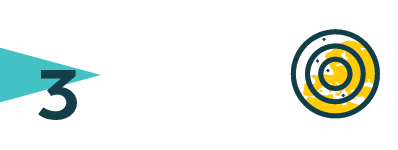

Planning and managing sea uses
2023


Healthy 'Blue Food' under a 'One Health' approach
2023


Enabling the green transition of 'Blue Food' production
2023
How can you engage?
The Partnership seeks to engage stakeholders across ocean industry sectors, policy, scientific disciplines, and civil society. You can engage in six co-funded calls over the seven-year timeframe 2022-2029. We will further add value with complementary actions and resource mobilisation, including:
- research infrastructures
- thematic programmes
- streamlining other funding sources
As a Partnership, we engage with initiatives at the level of sea basins and the Atlantic Ocean. At global level, we promote the EU approach to a sustainable blue economy. We seek synergies with other Partnerships and the Mission Restore our Seas and Oceans. In parallel, we are establishing a community of practice with different stakeholders to co-design activities.
Secretariat
- Ministry of Universities and Research, Italy - sbep@mur.gov.it
Brussels office
- Julie Olivier, j.olivier@fz-juelich.de
- Angiolo Boncompagni, angiolo.boncompagni@est.mur.gov.it
- Frode Dal Fjeldavli, fdf@forskningsradet.no
- Claire Hellio, sbep@agencerecherche.fr
Sea basin nodes
- Atlantic Ocean
Ireland, Majbritt Bolton-Warberg, majbritt.bolton-warberg@marine.ie
Portugal, Natalia Ospina-Alvarez, natalia.ospina@aircentre.org - Baltic Sea
Estonia, Andro Truuverk,
andro.truuverk@kliimaministeerium.ee, Liis Kikas, Liis.Kikas@kliimaministeerium.ee, Kadri Just, kadri.just@agri.ee
Poland, Monika Wloszek, monika.wloszek@ncbr.gov.pl - Black Sea
Bulgaria, Milen Baltov, mbaltov@bfu.bg
Georgia, Rusudan Jobava, jobava@rustaveli.org.ge
Turkey, Ebru Aydin, ebru.aydin@tubitak.gov.tr
Ukraine, Hryhorii Mozolevych, hryhorii.mozolevych@mon.gov.ua Mediterranean Sea
Greece, Sophia Dimotropolou, s.dimitropoulou@gsrt.gr
Malta, Maria Azzopardi, maria.azzopardi.2@gov.mt
Tunisia, Hayet Souai, souaihayet@gmail.comCroatia, Tanja Lukanovic, tanja@hrzz.hr
- North Sea
Belgium, Ann-Katrien Lescrauwaet, ann.katrien.lescrauwaet@vliz.be
Netherlands, Lisette Enserink, lisette.enserink@rws.nl
Partners


Commission for Coordination and Regional Development of the Centre - CCDRC


National Institute for Research and Development on Marine Geology and Geo-ecology
Stay updated
Additional activities
Additional activities
In addition to our core initiatives, we believe in the power of collaboration and engagement to create a lasting positive impact on our oceans and coastal communities. That's why we offer a range of additional activities that complement our mission and provide opportunities for individuals, organisations, and businesses to get involved.
Thematic Portfolio
1st Call launch: 31 July 2025, 15:00 CEST
The Sustainable Blue Economy Partnership, a European partnership under the European Commission’s Research & Innovation Framework Programme Horizon Europe, is pleased to announce its first Thematic Portfolio Call for Interest. This call aims to connect on-going projects to create and boost networking activities for a 2-year period, from early 2026 to early 2028. Two active networking portfolios will be established composed of projects granted by SBEP and a range of national/regional/EU funding streams on these 2 different topics:
- Topic 1: Innovations and digitalisation for low-impact sustainable small-scale fisheries management in EU sea-basins.
- Topic 2: Innovations for boosting sustainability in marine algae cultivations and circularity in the blue bioeconomy.
Ocean literacy
The Sustainable Blue Economy Partnership promotes Ocean Literacy with a multi-faceted, cross-cutting approach that includes, among others, an Ocean Literacy Toolkit, podcasts and short videos, webinars and training for co-funded projects, and targeted efforts to engage ocean businesses. Through these activities, the Partnership aims to encourage the behavioural and attitudinal changes needed to drive the sustainable transformation of Europe’s blue economy. Consequently, it seeks to generate interest in sustainable maritime innovations, career options, investment opportunities, and generally the quest of reconciling economic development with marine ecological integrity. Throughout these efforts, industry actors are targeted to help embed the corporate environmental responsibility needed to affect the transition; the thematic foci are guided by the Intervention Areas and align with the EU4Ocean Coalition.
The Ocean Literacy Toolkit is fully accessible and downloadable below. It is intended both for co-funded projects and the stakeholder community at large, and will be updated regularly to account for the latest developments.

You can also access the Toolkit here.
Exploitation and Impact Network
The aim of the network is to develop tools and actions to transfer new knowledge and increase impact of the co-funded R&I projects at local, national and European level, taking into consideration different target groups: policy makers, civil society and marine and maritime industry.
Ultimately, the Exploitation and Impact Network will contribute to a better co-creation and knowledge transfer between research industry, policy makers, and citizens by:
- making impact pathways mandatory at the project level;
- developing Open Access strategy and addressing Intellectual Property Rights;
- increasing the impact on the target groups needs through capacity building of the applicants to the call;
- promoting innovative solutions and accelerate their market uptake;
- bridging science policy gaps to maximise impact.
Stay updated
Aegaeo
George Petihakis gpetihakis@hcmr.gr
AIR Centre - Partner
ALGIKEY - Partner
AMA - Self-Funded Partner
Analytical Labs and Test Benches
Including pressure chambers, pools, calibration/inter-calibration bench, including sample analysis.
API - Self-Funded Partner
APN - Coordinator
Apply now: 2025 Transnational Access Call to Research Infrastructures
Aquafeed Upgraded: Enhancing Immune Function with Seaweed-modified Functional Compounds
The aquaculture industry is anticipating intensive production growth to meet future food demand. Yet, this growth is constrained by a number of challenges, not least including disease spread and use of antibiotics and chemicals to combat or reduce disease outbreaks. To support fish health, alternative aquatic feeds need to be added with immune-stimulating functional ingredients. Seaweed is a promising aquaculture feed crop due to its rapid growth rate, carbon sequestration properties, and valuable biomass supply it provides without the need for fertilization. It also can potentially be a valuable source of nutrients in fish feed. However, the use of unrefined seaweed is hampered by the presence of anti-nutritional compounds such as high levels of non-starch polysaccharides, phytases, and tannins that reduce nutritional digestibility and, consequently, fish health and aquaculture productivity.
Pre-treatment technology to sustainably (cost-effective, scalable, and environmentally responsible) unlock the potential of seaweed bioactive compounds is not well-established. In response, a biorefinery process can help extract seaweed’s nutritional components and convert them to high-value products for various applications. However, the current extraction process involves harmful chemicals (acid or alkali). Therefore, significant progress is needed to develop extraction and purification technologies that can contribute to a sustainable and circular blue economy. Screening and identification of seaweed-derived functional compounds are also required to assess their functional properties like immunomodulatory, antimicrobial, antioxidant, and prebiotic effects. Here, in-vitro cell culture is an efficient screening tool for assessing the functionality of novel bioactive molecules as it enables efficient and cost-effective control and manipulation of experimental conditions for compound screening. This needs to be complimented and validated using in vivo studies. While several studies have investigated native compounds’ effects on immune function in fish, determining the functionality of seaweed-derived compounds is in its early stage of R&D. Finally, there is a lack of information on the environmental and economic impacts of seaweed-based functional ingredients compared to existing conventional functional ingredients.
The above knowledge gaps identified will be addressed in this project to use of seaweed-modified ingredients in aquaculture. Our objective is to investigate seaweed-modified functional compounds in aquatic feed to improve growth, immune response, and disease resistance.
AQUAGOMA - Partner
AQUAGOMA - Productos Do Rio E Mar LDA
Arctic Seaweed - Self-Funded Partner
At the nodal point: regional sea basin representatives meet in Brussels
AU - Partner
AWI - Partner
Balancing economic, environmental, and social sustainability in the European aquaculture industry
The project follows a pan-European perspective by focusing on different geographical locations and different sea-basins (North Sea, Mediterranean Sea, Atlantic Ocean), and maps existing and promising solutions boosting the sustainability and viability of the aquaculture industry. Specifically, based on a mix of qualitative and quantitative methods, it will create new knowledge about how the European aquaculture industry can develop onwards in ways that are not environmentally harmful, and contribute to value creation and value capture both locally, nationally, and internationally. By combining several theoretical perspectives (economic geography, socio-technical transition studies, and literature on sustainable business models), the proposed project will provide valuable research-based insight and action points on an efficient and smart industry policy in order to successfully cope with the societal challenges of promoting economically robust, environmentally friendly, and socially inclusive industrial activities. Moreover, the project follows the multi-actor approach and includes a substantial degree of stakeholder engagement through various activities such as workshop and seminar series and a policy lab, which will allow a high potential for impact beyond the academic world and contribute to the uptake of AQUABALANCE’s research findings.
As a result, AQUABALANCE will provide pan-European and regional industry and policy advice and a policy roadmap that has a transnational perspective and also can be adapted to the regional specificities. These recommendations will serve as a background for a more sustainable growth of the aquaculture industry, contributing to achieving the goals of the EU Farm to Fork strategy, solving grand challenges of climate change and social justice, and thereby generating significant value for the whole society.

BANU - Partner
BettaF!sh - Partner
BLUE WAY to a Sustainable Europe
The atmospheric CO2 levels recently reached levels that are 50% higher than in the pre-industrial times. BLUEWAYSE proposes a significant cut in the CO2 emissions of the food and feed sectors, creating synergies and exploiting opportunities to achieve environmental and health benefits via economic sustainability. BLUEWAYSE will develop and promote novel, zero-waste biorefinery approach-based blue ways of exploiting marine resources, paving the way for a climate-neutral, environmentally sustainable, and resource-efficient food and feed sectors in Europe. Fisheries and aquaculture sidestream biomass will be processed to create food supplements and the sidestreams thereof will be used for a) the production of biomaterials using the bone and scales biomass, b) the production of low marine salmon feeds and c) the cultivation of microalgae using fish hydrolysate nanofiltration permeates rich in minerals and water soluble nitrogenous compounds of small molecular weight until now discarded. The cultivated microalgae biomass will be fractionated for maximum value creation by application-specific fraction optimization. Solids will be used in functional food products, such as bread, and oil and water soluble fractions, rich in antioxidants and immune stimulating compounds will be exploited as aquaculture feed additives, nutritional supplements to enhance male fertility and healthier sunscreen creams. The safety of the BLUEWAYSE ingredients and products will be evaluated against regulative standards, environmental, social and economic sustainability.
The project results will be communicated early on to inspire and promote collaboration and product co-creation with stakeholders, and disseminated through popular and scientific publications, concluding by the BLUEWAYSE conference.
Boosting seaweed farming through better utilization of genetic resources
The European macroalgae industry has a considerable potential to contribute to critical societal challenges such as carbon neutrality, access to nutritious and sustainable food, and a sustainable and circular European bioeconomy. We aim for sustainable economic development of the macroalgae industry by (i) improving the efficiency of propagation and selection of suitable genotypes, (ii) better exploiting genetic variation, while at the same time maintaining local genetic diversity and minimizing the potential for genetic pollution of natural populations, and (iii) actively involving stakeholders in creating a plan for future macroalgae breeding in Europe.
In the proposed Blue Bio Boost (BBB) project, we will test innovative strategies and novel methods that utilize properties of macroalgal life cycles, hybrid vigour (heterosis), and the adaptation to the local environment and culturing conditions, to obtain this goal. Through a Proof of Concept experiment we will test a simple way of utilizing local genetic variation and heterosis for improved productivity that will result in minimal change in allele frequencies relative to the surrounding natural population, thus mitigating the potential effect of genetic exchange. BBB will create a biodiversity collection of kelp gametophytes, identify methods to increase gametophyte growth rates, and develop gametophyte phenotyping protocols for growth rate and light and temperature tolerance. Building on results from this experiment, we will design future strategies for optimized use of hybrid vigour. Finally, BBB will develop tools based on ploidy manipulation and determination for breeding purposes and explore the utility of giant sea lettuce in aquaculture. The developed methods and technologies will create strong incentives-to-invest in future algae breeding, while access to high-yield seeding materials adapted to local conditions will stimulate seaweed aquaculture production and processing that channel customized biomass to dedicated seaweed applications, and all associated material and service providers, thus providing food, feed and raw materials for a growing population.
Furthermore, BBB will provide crucial insights into the genetic diversity of natural populations and cultivated material, and allow monitoring, evaluating, and/or mitigating the extent of genetic exchange from the onset of large-scale cultivation in co-existence with natural populations. As an alternative to developing seeding materials for production sites, breeding methods that create seeding materials with specific genetic compositions may also be used for kelp forest restoration. Since our approach promotes using local natural resources for local aquaculture production, it will stimulate coastal livelihoods and short-chain production systems, while utilizing the climatic, environmental and genetic diversity along the European coastline, creating impact at scale.

Boosting the resilience of European shellfish production against climate change-related challenges through genetic selection
Bivalve aquaculture has become increasingly important sector of global blue bioeconomy in recent years due to its numerous environmental, economic, and social benefits. Shellfish farming is considered sustainable and environmentally-friendly compared with other aquaculture species as it is low trophic, has a very limited carbon footprint, and it provides multiple ecosystem services. Shellfish production is already facing major challenges due to direct and indirect effects of climate change and such challenges will become even more serious in the future.
The long-term goal of ShellFishBoost is to mitigate the effects of climate change on the bivalve production with the ultimate impact of protecting and developing a vital blue bioeconomic sector in Europe. To achieve this goal, the project has been co-designed together with key stakeholders (bivalve hatcheries, shellfish producers and their organizations) first by identifying the major problems for each main bivalve species farmed in Europe. The main objectives of ShellFishBoost are the development/optimisation of advanced tools for genetic selection (molecular tools, optimized breeding schemes) and the estimate of genetic parameters for key traits (growth, resistance to heat-waves, salinity stress, summer mortalities, and presence of harmful algal toxins). A third major objective is the co-creation of best practices for selective breeding in each target species, together with industrial partners of ShellFishBoost and other relevant stakeholders (producer associations and other bivalve hatcheries). Project activities will be divided into five problem-focused workpackages (WPs). WP1 will develop and optimize advanced tools for genetic selection. WP2 will estimate genetic parameters and identify Quantitative Trait Loci (QTLs) for disease resistance in oysters and clams. WP3 will estimate genetic parameters and identify QTLs for resilience to climate-related challenges in oysters and clams. WP4 will estimate genetic parameters and identify QTLs for reduced toxin accumulation in mussels. WP5 will co-create best practices and strengthen the capacities for selective breeding in bivalves. ShellFishBoost fully embraces the approach based on the “Theory of Change”. WP5 objective is to effectively translate projects outputs into positive outcomes for European shellfish farming sector, to achieve the ultimate impact of improving the resilience of the sector against climate change effects.

Brim - Self-Funded Partner
BTU - Partner
Cerema - Partner
Chalmers - Coordinator
Chalmers - Partner
CIIMAR - Partner
CMMI - Partner
CNR-ISSMC - Partner
Coming soon: First Transnational Access Call to Research Infrastructures
Coming Soon: Third Joint Transnational Call for R&I Funding
Commission for Coordination and Regional Development of the Centre - CCDRC

Connecting to the Mediterranean blue economy community
Contact
Contact
Sustainable Blue Economy Partnership
The Partnership is coordinated by Italy, with Norway as co-coordinator.
Coordinator:
Ministry of Universities and Research (Italy) - sbep@mur.gov.it
Co-coordinator: Research Council of Norway
Communication: info@bluepartnership.eu
Stay updated
Secretariat
- Ministry of Universities and Research, Italy - sbep@mur.gov.it
Brussels Cellule
- Julie Olivier, j.olivier@fz-juelich.de
- Angiolo Boncompagni, angiolo.boncompagni@est.mur.gov.it
- Frode Dal Fjeldavli, fdf@forskningsradet.no
- Claire Hellio, sbep@agencerecherche.fr
Sea basin nodes
- Atlantic Ocean
Ireland, Majbritt Bolton-Warberg, majbritt.bolton-warberg@marine.ie
Portugal, Natalia Ospina-Alvarez, natalia.ospina@aircentre.org - Baltic Sea
Estonia, Andro Truuverk, andro.truuverk@kliimaministeerium.ee, Liis Kikas, Liis.Kikas@kliimaministeerium.ee, Kadri Just, kadri.just@agri.ee
Poland, Monika Wloszek, monika.wloszek@ncbr.gov.pl - Black Sea
Bulgaria, Milen Baltov, mbaltov@bfu.bg
Georgia, Rusudan Jobava, jobava@rustaveli.org.ge
Turkey, Ebru Aydin, ebru.aydin@tubitak.gov.tr
Ukraine, Hryhorii Mozolevych, hryhorii.mozolevych@mon.gov.ua - Mediterranean Sea
Greece, Sophia Dimotropolou, s.dimitropoulou@gsrt.gr
Malta, Maria Azzopardi, maria.azzopardi.2@gov.mt
Tunisia, Hayet Souai, souaihayet@gmail.com - North Sea
Belgium, Ann-Katrien Lescrauwaet, ann.katrien.lescrauwaet@vliz.be
Netherlands, Lisette Enserink, lisette.enserink@rws.nl
CSAM
Sequencing and Molecular Analysis Center
Pasquale De Luca Pasquale.deluca@szn.it
CSCS - Partner
CSIC - Coordinator
CSIC - Partner
CTN - Partner
DAS sensors, 2 km fiber optic cable, seismic and thermal data
Fausto Ferraccioli fferraccioli@ogs.it
Andrea Schleifer aschleifer@ogs.it
Data and Scenarios for a Sustainable Mediterranean Blue Economy
The World Ocean Council Europe is proposing to lead a consortium of 15 partners representing research institutes, universities, enterprises and institutions linked to Maritime Spatial Planning (MSP), to implement the MEDSEAPLAN project ('Data and Scenarios for a Sustainable Mediterranean Blue Economy) over 36 months. The project will focus on future-proof Maritime Spatial Planning, the need for advanced data and an increased inclusion of maritime industry in the development of MSP-relevant foresight scenarios.
MEDSEAPLAN aims to operationalise impactful change in sea basin-level multi-sectoral MSP development with data-driven and industry-based input. The project will focus on assessing current and future data needs for regional MSP, and flowing from this, on innovative solutions to create data for MSP (and transforming it into information that can be used by MSP planners). Concrete pathways to collect innovative data sets for MSP will revolve around nature-based solutions for improved biodiversity; including data from maritime industry vessels; and the design and demonstration of innovative floating data buoys. The strength of MEDSEAPLAN lies in its multi-sectoral, multi-actor and cross-border approach. The project will design a set of scenarios, which will be co-developed with stakeholders through assessing their data needs and testing these scenarios to assess potential solutions to future impacts brought forward by the maritime industry leaders. In this way, MEDSEAPLAN will contribute to the development of MSP that is of a more robust knowledge-based and data-driven nature, realising a more sustainable Blue Economy in the Mediterranean Region.

Digital Twin of the Ocean for Arctic Fisheries
ARCFISH will develop a pilot Digital Twin of the Ocean (DTO) Platform delivering new data products and services in support of sustainable Arctic Fisheries. These data products and services will be co-designed with stakeholders in the fisheries sector and used to create products such as ecosystem indices that can be applied in fisheries planning and management.
Available data sources and gaps will be analysed to fulfil user needs and ingest relevant data into the Blue Insight DTO Platform. They include (1) oceanographic data from research vessels, autonomous mobile platforms, fixed buoys, and ships of opportunity such as e.g., fishing vessels, (2) met-ocean-ice forecasts and reanalysis from models (e.g., from CMEMS and INTAROS), (3) fisheries management data (e.g., fisheries stocks, species) from ICES and national sources, and (4) reference data (e.g., bathymetry, economic zones, AIS data). Based on the stakeholder needs, a use case for sustainable fisheries will be implemented using the ingested data and tools for generating customised products. The use case will address two geographic regions, the west coast of Greenland centred around the rich fishing grounds surrounding Disko Bay, and the region around Iceland, northwards to the Svalbard archipelago and the Barents Sea.
Using the compiled data and developed tools, a regional database of climate, environmental, and fisheries data will be created and made available through an open data repository to support sustainable Arctic Fisheries. This important asset will contribute to the Sustainable Blue Economy Partnership (SBEP) program by providing new data products that can be utilised in digital twin platforms to support decision-making in fisheries management. The Blue Insight Platform developed by Kongsberg Discovery, Norway, will be part of the Digital Twins of the Ocean (DITTO) program of the UN Decade of Ocean Science for Sustainable Development. As part of DITTO and through engagement with other running Digital Twin projects and initiatives such as EDITO, ILIAD, Blue-Cloud2026 and EOSC, ARCFISH development will follow standards for data exchange and implementation of services and tools in the EU DTO. ARCFISH will prepare training material for using the Blue Insight DTO and organise capacity building events for stakeholders and other SBE projects. Training will be organised in conjunction with project meetings and SBEP seminars. Furthermore, the regional database, developed services and tools, training and promotional material will be promoted through the iAOS portal from INTAROS, a public project website linked to relevant DTO sites, and dedicated social media channels. ARCFISH results will also be promoted through the partners extensive network of Arctic observing and data management, digital technologies, capacity building in ocean literacy, stakeholder interaction and fisheries.

Digital Twin of the Ocean: Animal Tracking
The ocean is a wickedly challenging area to conduct scientific research. Marine fish evolve in an environment that is not readily accessible (immersed, offshore) leading to fragmented, and sometimes non-existent, knowledge of species distribution and ecology. The concept of generating digital twins of the ocean is borne from the necessity of having tools and methodologies available to support research and management activities on Europe’s seas. In this context, data and tools derived from mapping and animal tracking can support efforts aimed at facilitating modelling and simulations for fisheries management and spatial planning. Digital twins have largely focused on physical features of the oceans, especially bathymetric mapping, water circulation, and physicochemical properties; however, biological digital twins developed from animal tracking are highly promising to support management actions and key policy like the EU Common Fisheries Policy and the Marine Strategy Framework Directive.
Animal tracking (acoustic, archival telemetry) has emerged as a valuable scientific tool for marine ecology and oceanography. Animal movement is an essential ocean variable1, but one that is generally challenging to ascertain because of the highly dynamic nature of animal movement at the immense scale at which it must be observed, and because GPS signals cannot reach satellites from under water. Technological advances in aquatic animal telemetry technologies have allowed for near-continuous remote observation of marine animals after initial capture. Innovations driven forward by the European Tracking Network (ETN) are entrenching telemetry as a key tool for tracking aquatic species in Europe, and will support the development of a digital twin of the North Sea fauna in this project. DTOTrack will leverage existing telemetry infrastructure in eight different European nations along with a dedicated international digital infrastructure housed at VLIZ (ESFRI LifeWatch and Horizon Europe Bioflow), and the new Horizon Europe STRAITS project, which is instrumenting major acoustic telemetry receiver lines along the Danish Straits and the Celtic Straits to develop a digital twin of North Sea fauna. In this project, eight North Sea member states will collaborate to deploy regional infrastructure (tags and receivers), and leverage existing physical (STRAITS project lines) and digital infrastructure (LifeWatch ETN database) to develop a digital twin of the North Sea’s fauna. Funding will be leveraged to coordinate animal tagging studies across countries to test hypotheses about animal migration and behaviour, overlap with offshore developments, and to address ‘what if’ scenarios of interest to managers, developers, and conservation organisations, using novel data streams and integrated tools.
Directorate-General for Maritime Policy

Drones fleet
3 LiDAR, 2 IMU, 2 Hyperspectral, 2 multispectral, 4 Thermal, 6 CMOS Cameras, 2 gas, 1 Magnetometer
Fausto Ferraccioli fferraccioli@ogs.it
Paolo Paganini ppaganini@ogs.it
DTU - Partner
Dutch Ministry of Agriculture, Nature and Food Quality - NWO
Bezuidenhoutseweg 73, The Hague

EHU - Partner
ELKON - Partner
EMSO Western Ionian Sea
Davide Embriaco davide.embriaco@ingv.it
EMSO-EUXINUS fixed platform
Vlad Radulescu vladr@geoecomar.ro
Environmental Monitoring Lab
Stefano Chiappini Stefano.chiappini@ingv.it
EPAGRI - Self-Funded Partner
Estonian Ministry of Regional Affairs and Agriculture- REM

Estonian Research Council
Rue Guimard 11/13, 1040 Brussels, Belgium

EurOcean - Partner
EV-ILVO - Partner
Exp Labs Mesocosm Facility
National Research Council

Simone Cappello simone.cappello@irbim.cnr.it
Experimental Marine Laboratories
Raimund Bleischwitz direktor@leibniz-zmt.de
Claudia Schüler claudia.schueler@leibniz-zmt.de
Exploitation and Impact Network
The aim of the network is to develop tools and actions to transfer new knowledge and increase impact of the co-funded R&I projects at local, national and European level, taking into consideration different target groups: policy makers, civil society and marine and maritime industry.
Ultimately, the Exploitation and Impact Network will contribute to a better co-creation and knowledge transfer between research industry, policy makers, and citizens by:
- making impact pathways mandatory at the project level;
- developing Open Access strategy and addressing Intellectual Property Rights;
- increasing the impact on the target groups needs through capacity building of the applicants to the call;
- promoting innovative solutions and accelerate their market uptake;
- bridging science policy gaps to maximise impact.
Feedback survey - Non-participants - 1st Sustainable Blue Economy Partnership
Feedback survey - Non-participants - 1st Sustainable Blue Economy Partnership
Thank you for taking the time to answer our survey. Your valuable insights are instrumental in our continuous improvement efforts. We appreciate your contribution towards making future events even more successful and fulfilling for all participants.
Feedback survey - Participants at the 1st Sustainable Blue Economy Partnership Symposium
Feedback survey - Participants at the 1st Sustainable Blue Economy Partnership Symposium
Your insights are instrumental in our continuous improvement efforts. We appreciate your contribution towards making future events even more successful.
FEM - Partner
FEPROMODEL - Self-Funded Partner
Fixed Platform (W1M3A)
National Research Council

Roberto Bozzano roberto.bozzano@cnr.it
Sara Pensieri sara.pensieri@cnr.it
Fixed platform Coastal Radar network
National Research Council

Marcello Magaldi marcellogatimu.magaldi@cnr.it
Fixed Platform Corsica channel
National Research Council

Katrin Schroeder katrin.schroeder@cnr.it
Fixed Platform Sicily Channel
National Research Council

Katrin Schroeder katrin.schroeder@cnr.it
Forschungszentrum Jülich GmbH

Fraunhofer - Partner
From science to policy: assessing impacts and developing solutions for ship traffic and offshore wind farms through detailed soundmaps
Owing to the synergy among research institutions from Italy, Germany, Sweden, and Norway, BluEcho aims to improve the sustainability of the shipping and wind farm industries and conserve species biodiversity by assessing noise impacts on marine fauna and evaluating the efficiency of various acoustic mitigation measures to reduce noise levels.
Our comprehensive approach will adopt a combination of numerical simulations, fieldwork, and desktop studies to provide critical data for the design of low-noise Marine Protected Areas implemented in the Mediterranean Sea, the North Sea, the Baltic Sea, the Norwegian Sea, and the Polar Oceans. Data from the more pristine polar regions will serve as a benchmark for comparison with areas with high shipping traffic recorded in the other sea basins. Sound produced by wind turbines and ship propellers will be reproduced in detail with cutting-edge numerical techniques and will serve as input for producing detailed sound maps. In particular, the Hywind Tampen wind farm case study in the Norwegian Sea will serve as a starting point to develop similar sustainable technologies in other sea basins. Model validation, resulting from the joint effort of the partners, will lead to fine-tuning and optimization processes for the numerical tools.
The numerical modeling will generate accurate three-dimensional sound maps resulting from existing models and in-house codes that will provide useful information on the effective noise-generation mechanisms. The maps will guide the process of identification of mitigation measures of noise emission.
Noise reduction measures already taken into consideration by various ship-building firms will be evaluated for their effectiveness with a science-based approach. Underwater noise impacts will be assessed on selected marine taxa tailored to each sea basin.
The joint effort among the partners will contribute to implementing a coordinated international approach to effectively manage underwater noise pollution.
The project will deliver an economic analysis of costs and benefits coupled with a marine spatial planning analysis. Given the difficulty to reliably monetize benefits, a cost effectiveness analysis is suggested to find the best balance between noise reduction and economic cost minimization. Starting from the list of measures that can be adopted to reduce noise, we will analyze their cost components: investment and variable cost.
The project's results will use marine data from Copernicus Marine service and EMODnet and will be broadly available and accessible to decision-making bodies and represent a benchmark for the relevant stakeholders.
Long term impacts of BluEcho will be: 1) the contribution to the development of new decision-support tools; 2) the promotion and integration of initiatives and support to interconnectivity of policies among regional sea basins; 3) the enhanced cooperation, co-design, and activity alignment with stakeholders beyond academia.
From waste to taste: exploring innovative food applications of postharvest fish losses
WASTE2TASTE is a network of 8 European partners including academia, research centers, and SME’s, with proven expertise in higher education and endowed with state-of-the-art scientific and technical expertise aimed at the development of commercially viable products by using postharvest fish losses (PHFL), including unwanted fishery by-catch species (e.g., non-indigenous species (NIS) and cartilaginous fish with low commercial value) and by-products from fish processing and aquaculture industries.
The main WASTE2TASTE objective is the valorization of PHFL, showing potential applications in a circular economy and an eco-friendly vision by developing protocols for sustainable exploitation of underused and/or wasted marine resources, to obtain high-value products for food applications. The base of WASTE2TASTE is to utilize PHFL, naturally rich in proteins and bioactive compounds, to develop innovative green and cost-effective bioprocesses for the production of marine ingredients (e.g., collagen, chitin/chitosan, and fish oil), reducing extraction time and use of hazardous solvents/enzymes allowing, at the same time, to minimize pollution into the ecosystem.
Therefore, WASTE2TASTE will (i) contribute to reducing the waste volume through the development of appropriate PHFL management measures, (ii) allow to address the European "ZeroWaste" goal aiming at the 3R principle "Reduce, Reuse and Recycle”, (iii) contribute to achieve a resilient and sustainable development for marine/maritime sector and, in an indirect way, (iv) allow to mitigate the NIS, which cause damage to marine ecosystems and humans. The challenge is to gain insights into market opportunities that will be profitable and will satisfy new and different attitudes/demands of consumers.
Overall, WASTE2TASTE will fully exploit the potential of underutilized marine biological resources, from laboratory to industrial scale production of marine collagen and chitosan-based products, with potential commercial uses that reach Technological Readiness Level 7. WASTE2TASTE will create a nutritional end product targeting different end-users’ health issues (e.g., exercise performance, muscle growth, joint problems, gut health, and obesity).

FRV 'Walther Herwig III'
Reinhold Hanel reinhold.hanel@thuenen.de
Klaus Wysujack klaus.wysujack@thuenen.de
Functional processing of cultivated seaweeds for novel food products
One of our most pressing societal challenges today is feeding the growing world population in a sustainable manner. The present global food system causes major environmental problems, including land degradation, loss of biodiversity, greenhouse gas emissions, water usage and pollution. There is thus a great need for novel food resources that are healthy, safe, and nutritious, and at the same time cause less emission of greenhouse gases, pollutants, and excess nutrients, and do not further compromise the sustainability and biodiversity of natural resources. Cultivated macroalgae are a staple of the Asian diets and can have a bigger contribution to more sustainable food systems, but still faces challenges in penetrating western markets due to an inherently low nutritional content, low versatility and inclusion rates in foods because of sensory properties, lacking innovation in product development, and knowledge gaps regarding safety and health benefits.
The FunSea project aims to enhance nutritional quality, safety and functional properties of cultivated brown and green algae as food ingredients, through development of new sustainable processing technologies and utilization of side streams and residual biomass from seaweed production as well as other aquaculture industries and fisheries. The project will further develop and characterize novel food prototypes toward a wide European market, and assess environmental, economic, and regulatory aspects along the value chain from biomass production to finished products. The consortium consists of four research partners (SINTEF, Lund University, Aalborg University, Fraunhofer IMTE), one public body (Marine centre Simrishams municipality) and two industry partners (Seaweed Solutions, Bettafish) representing four countries (Norway, Sweden, Denmark, and Germany) and will utilize marine resources from the Atlantic Ocean and Baltic Sea. Key technologies in the project include biomass cultivation and pre-processing, enzymatic and microbial processing, food technology, and environmental analysis. The FunSea project will develop new knowledge, methodology and prototypes based on renewable and sustainable marine biomasses, contributing to the growth of the blue economy, development of scientific excellence, and solutions toward key societal challenges.
Fund for Scientific Research - FRS - FNRS

Funding opportunities
Funding opportunities
The partnership is launching six co-funded calls for research and innovation proposals over a seven-year timeframe. All open calls can be found below.
Stay updated
Past calls
FURG - Partner
GAIA BLU RV
National Research Council

Lorenza Evangelista navegaiablu@cnr.it
GEOMAR - Partner
GEOMAR-Long term stations (GEOMAR-LTS)
Johannes Karstensen jkarstensen@geomar.de
Anja Wenzel awenzel@geomar.de
Get to know our first projects
GU - Partner
H2OScitech - Self-Funded Partner
Hailia - Self-Funded Partner
Homepage
The Sustainable Blue Economy Partnership
The Sustainable Blue Economy Partnership represents an unprecedent effort of 74 Partner institutions from 34 countries and the European Commission to pool research and innovation investments and align national programmes at pan-European scale. As a Horizon Europe co-funded partnership, its strategy takes into consideration the R&I agendas of the sea basins (Mediterranean, Black Sea, Baltic and North Sea) and the Atlantic Ocean and builds on lessons learned from previous initiatives.
The Sustainable Blue Economy Partnership is organising its 2nd Symposium: Full Sail Ahead Towards the Sustainable Blue Economy on 11 February 2026 in Bucharest. Join us there!
investments
over 7 years
the European Commission
News
Blue Synergies in Action: Sustainable Blue Economy and Waterborne Launch Joint Dialogue
On 8 April 2025, the Sustainable Blue Economy Partnership, jointly with the Waterborne Technology Platform coordinating the Zero-Emission Waterborne Transport partnership and in collaboration with the EU Mission "Restore our Oceans and Waters", brought together leading experts, EU projects, and stakeholders from across Europe for a technical workshop on ports, marinas, logistics, and sustainable fisheries.
Learn more ➝
Exploring market opportunities in the blue economy: Sustainable Blue Economy Partnership co-funded projects at BlueInvest Day 2025
In March 2025, two projects co-funded by the Sustainable Blue Economy Partnership participated in BlueInvest Day, a flagship event organised by the European Commission during the European Ocean Days to showcase champions of innovation, investment, and sustainability in the blue economy, bringing together entrepreneurs, investors, and innovators.
Natalia Mæhle, coordinator of the AQUABALANCE project, balancing economic, environmental, and social sustainability in the European aquaculture industry, and Ruth Higgins from ARCFISH, the Digital Twin of the Ocean for Arctic Fisheries, joined the event in Brussels to explore commercialisation pathways, networking opportunities, and innovation in the blue economy. They share their experiences and key takeaways from the event.
Learn more ➝
Sustainable Blue Economy Partnership’s Projects Now Endorsed as UN Ocean Decade Actions
Fourteen research and innovation projects co-funded under the Sustainable Blue Economy Partnership's first joint transnational call are now officially recognised by the UN Decade of Ocean Science for Sustainable Development 2021-2030 (‘Ocean Decade’) as UN Ocean Decade Actions. This acknowledgement underscores their contribution to global efforts towards a climate-neutral, sustainable, resilient, and competitive blue economy.
Learn more ➝
At the nodal point: regional sea basin representatives meet in Brussels
On Monday, 3 March 2025, the Sustainable Blue Economy Partnership's regional sea basin nodes gathered for a meeting in Brussels. Hosted at the Tuscany Region liaison office in collaboration with Tour4EU, the meeting brought together partners, nodes and stakeholders to assess progress, refine strategies, and strengthen regional cooperation in advancing a sustainable blue economy across Europe’s maritime basins.
Learn more ➝
Stay updated
Events
The Sustainable Blue Economy Partnership, a European partnership under the European Commission’s Research & Innovation Framework Programme Horizon Europe, is pleased to announce the launch of its third Joint Transnational Call. This third call is co-branded by the UN Decade of Ocean Science for Sustainable Development as a means of stimulating new initiatives in co-designed and co-delivered knowledge and solutions for a sustainable ocean economy.
An information webinar for potential applicants was held to answer any questions regarding the call. You can re-watch it here or download the presentation.
More info ➝
The Sustainable Blue Economy Partnership (SBEP) has launched in 2025 its first Thematic Portfolio Call for Interest, aiming to connect ongoing funded projects (whether financed by SBEP or other national, regional or European mechanisms) to create and boost networking activities. The Portfolios will be running for a 2-year period, from 2026 to 2028, and focus on two topics: innovations and digitalisation for low-impact sustainable small-scale fisheries management in EU sea-basins, and innovations for boosting sustainability in marine algae cultivations and circularity in the blue bioeconomy.
An information webinar for potential applicants was held to answer any questions regarding the call. You can re-watch it here or download the presentation.
More info ➝
How to effectively benefit from synergies of different funding streams?
HVL - Coordinator
Hydrographic boat 10 m length
Hydrographic Institute of the Navy

Fabrizio Orengo Maridrografico.genova@marina.difesa.it
Hydrographic boat 8 m length
Hydrographic Institute of the Navy

Fabrizio Orengo Maridrografico.genova@marina.difesa.it
Hydrographic Institute of the Navy

IALB - Partner
IFREMER - Partner
IFT - Partner
IMC - Partner
Improved Valorization of Marine Sources and Processing Waste for Resource Efficient Blue Food/Feed and Environmentally Sustainable Materials Development
Impact-oriented utilization pathways for new sustainable, unexploited low trophic marine resources and fish/aquaculture wastes are one of the key pillars of sustainable transformation of EU blue economy. SEAREFINERY aims to establish a novel bio-based blue food/feed and blue food packaging materials production platform by embracing marine-based sources and wastes targeting five seas. The SEAREFINERY concept will be designed within a multidisciplinary and smart collaboration platform for developing a breakthrough eco-centric strategy considering the local sources, economic and social perspectives at transnational level within the EU. The specific aims of SEAREFINERY includes extraction of high value-added compounds from invasive species, low trophic organisms and marine derived by-products, utilisation of marine-based extracted materials for development of blue food analogues (meat and cheese), functional bread, and smart and active food packaging materials, valorisation of aquaculture and fish waste for blue feed production via bacterial fermentation and microalgae cultivation, a systematic evaluation of the products based on environmental impacts, market analysis, and consumer acceptance followed by a multi-criteria decision making analysis.
At the end of the project, this pin-point novel approach will fulfill the needs for restoring and preservation of the marine ecosystem, the need for valorisation of marine resources for sustainable blue economy, the needs and requirements of society and end-users as well as it will allow for new business models and investment schemes.
IMR - Partner
Innovation Norway
West End House, 11 Hills Place W1F 7SE

Innovative design and operation for rare earth material reduction and optimized lifetime for next generation offshore wind-based hydrogen production
In the green hydrogen - the hydrogen from renewable energy such as offshore wind - the rare earth materials (REE) play an important role in the magnet and catalyst needed for both offshore wind and the hydrogen production, respectively. The high production concentration, a growing Chinese domestic market demand and an increased worldwide geopolitical political tensions can pose a high supply risk for Europe. REE production comes also with significant environmental impacts. Some estimations show that for every ton of REE, 2,000 tons of toxic waste, including radioactive waste, are produced. Therefore, as a key pathway for the EU’s net zero commitment, hydrogen produced by wind energy’s potential needs to be fully unlocked. This requires disruptive technologies to achieve this goal.
INSPIRE is born in response to the priority area “Development of offshore marine multi-use infrastructures to support the blue economy” to combine marine renewable energy constructions with hydrogen production, to develop multi-use structures and materials to reduce, recycle, reuse and being resistance to extreme environmental conditions. To reach these goals we have set up a consortium of industrial and research partners to optimize green hydrogen system design methodology with minimum REE, to deliver a reference design of an optimized open access 25x15 MW floating wind-hydrogen with minimized REE and optimized lifetime, to implement AI-based wind-hydrogen production optimization and to establish a pathway towards implementation in policy and industrial standards.
The core ambition of INSPIRE is to deliver innovative optimized design for REE reduction, and AI-based optimized operation for integrated hydrogen-wind system as well as road maps for EU policy makers.
INRAE - Partner
Integral valorisation of seaweed biomass for the development of sustainable, high nutritional quality food products
SEAFOODTURE is an ambitious project which aims to contribute towards an integral valorisation of seaweeds for the production of sustainable, high nutritional quality food products. The project combines research activities dealing with: sustainable cultivation of seaweeds; development of protein-rich ingredients and seaweed-based food products through green technologies; production of bio-based packaging materials; structural and techno-functional characterization; assessment of nutritional quality and digestibility; sensorial and consumer studies to bring the products closer to the final markets; and life cycle assessment (LCA) and socio-economic analysis, to ensure the environmental social and economic sustainability. This will be achieved by combining the complementary and multidisciplinary expertise of the European academic and industry partners involved in this proposal and the participation of relevant stakeholders.
The food industry is facing great challenges, motivated by society’s needs and environmental concerns. The rapid population growth is pushing food production towards its limits, and reliance on animal-based protein sources puts additional strain on the environment. Moreover, plant protein sources need to be complemented by novel cultivars, less dependent on the use of water and lands. Thus, there is an urgent need to develop additional protein-rich food products with high nutritional quality by exploiting non-traditional sources. Seaweeds are attracting great interest due to their advantages over land biomass; however, they are still largely unexplored as foods, which is mostly due to (i) the lack of sustainable and robust strategies for the supply of seaweed biomass, (ii) the scarce knowledge on their techno-functional and nutritional properties, which makes it challenging to process them and ensure product stability/safety at industrial scale, (iii) the knowledge gap with regards to the digestibility and bioaccessibility of their proteins and (iv) the low awareness of consumers in European countries towards seaweed-based products. In this project, we aim to exploit the full potential of seaweeds as an alternative and sustainable protein source by investigating the techno-functional and nutritional properties of protein-rich products in which proteins will be combined with other components such as dietary fibres, providing health and techno-functional benefits. Furthermore, with the aim of minimizing the amount of waste generated through the manufacturing process, residues obtained after the extraction of protein-rich ingredients will be used to generate bio-based food packaging materials. This will allow to develop novel seaweed-based food products through a circular economy approach. The project is expected to have a strongly positive impact on the seaweed industry, fostering an efficient biomass utilization to generate high added value products and promoting the consumption of seaweed-based foods amongst EU consumers.
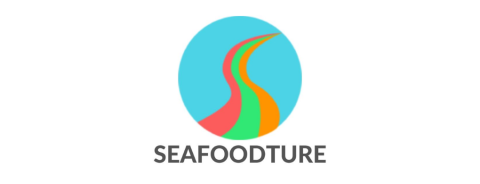
Intervention Area: Blue Bioresources
Intervention Area: Blue Bioresources
This Intervention Area addresses research and innovation needs to support a just transition to the sustainable production and utilization of blue bioresources, with emphasis on production and processes that minimise the environmental impacts while meeting the demand for healthy and affordable blue food, feed, and other biobased products.

Background and rationale
The EU Green Deal sets the context for Europe’s blue economy to become sustainable and climate-neutral by 2050. The Blue Bioeconomy represents an important component of the broader blue economy, delivering food, feed and bio-based products for internal and export markets. With the completion of the Horizon 2020 BlueBio ERA-Net in 2023, the SBEP becomes a key implementing mechanism in Horizon Europe for blue bioeconomy R&D. To achieve sustainability, it is important to consider all stages of the bioresources value chain, from production (capture fisheries, aquaculture) to seafood processing, extracting value from waste streams, developing new types of biomasses, new food and non-food products, as well as advanced extraction technologies such as those used in biorefineries. Cooperation will be sought with the FutureFoodS partnership, which will focus on the post-farming and -fishing part of food systems.
Key considerations to be taken on board in this Intervention Area include the importance of engaging with industry and stakeholders and if relevant, the application of multi/trans-disciplinary approaches to address complex challenges, including social sciences and humanities.
Key thematic areas
Sustainable Fisheries and Harvesting
Overexploitation and the cumulative impact of overfishing with the effects of pollutants, climate change and other drivers on susceptible species and ecosystems is leading to unsustainable scenarios for the next decades. To bring Europe's fish stocks back to sustainable levels, there are important challenges remaining. More food, feed or biotic resources for other purposes can be obtained from more targeted fisheries and harvesting by improved management of overfished stocks, optimized fishing technologies and practices to reduce bycatch and discards, and increased fishing and harvesting of underutilised species (i.e., zooplankton, other invertebrates, macroalgae). A forward-looking ecosystem-based management approach under EU legislation yet tailored to local conditions will reduce adverse impacts of fishing and harvesting on marine ecosystems, particularly sensitive species, and on vulnerable habitats. The sustainability of mesopelagic fisheries is still being assessed and there is a unique opportunity to ensure that EBM is embedded from the outset. New digital tools such as remote electronic monitoring systems, catch reporting using mobile applications, ecosystem modelling and artificial intelligence tools can optimize both small- and large-scale fishing operations. At the same time such technologies can enable data collection and analysis that can support development of sustainable management practices, while providing full traceability for our seafood. Assessments and solution scenarios should consider the impact and social implications of combined drivers such as habitat degradation, pollution, warming, water stratification and acidification, as well as their effects, such as changes in ecosystem composition, higher frequency of toxic algal blooms and alterations with species migration and phenology.
Activities should address the following aspects:
-
Integrated approaches to innovation for fishing vessels to improve vessel operations and practices including technology for e.g., location (also to contrast illegal fisheries), and water characteristics, catch logistics, while reducing the use of fossil fuels.
-
Exploring and co-developing with industry the potential for new fishing techniques, technologies, and new resources for small-scale fisheries, and seaweed harvesting.
-
Research to inform policy options and management of migratory fish stocks that spend different parts of their life cycle in different jurisdictions. This is a critical issue for the EU Common Fisheries Policy and co-management of stocks between EU and third countries.
-
Supporting the application of ecosystem-based management approaches to inshore and small-scale fisheries management.
-
Understanding the impacts of climate change and human activities including pollution on commercial fisheries, fish stocks and other species with commercial potential.
-
Understanding cross-compliance, alignment and trade-offs between fisheries policy and management with other policy domains (MSP, MSFD, WFD) and the implications of measures associated with the EU Nature Restoration Law on fishing and fishers.
-
Technological advancements to preserve the nutritional value and use for new types of catch or harvest.
-
Increased R&I efforts to improve the understanding of species’ role in the trophic webs, as well as their growth potential as seen in an integrated sustainability and biodiversity-resilience perspective, including the knowledge in concrete management solutions (based on managers’ needs).
-
Understanding the social and economic drivers of change in commercial fisheries to inform both fisheries, economic and regional development policy and planning.
-
R&I that supports new digital tools for monitoring for well-informed and timely decision making and sustainable management considering the impact and societal costs of stressors such as habitat degradation, pollution, and climate change.
-
Development of more selective fishing gears that reduce environmental impact, particularly in the bottom-contact fisheries, and for harvesting new species including macroalgae. Focus can also be on improving fish welfare and increasing traceability.
Aquaculture
Production of safe, secure food and sustainable bioproducts through aquaculture, has a margin for improvements in respect of diversification, competitiveness, and environmental performance. Aquaculture production should be rethought to satisfy growing consumer demand for blue food, as well as the need for innovative blue bioproducts, while enhancing the social, economic, and environmental sustainability and carbon neutrality of the production. This requires targeted technological advancements and diversified production solutions also considering regional and local differences throughout Europe. Integrated multitrophic aquaculture (IMTA), off-shore production, closed systems, or land-based infrastructure with use of recirculating aquaculture systems (RAS), are options for culturing of established and new species. Diversification of species, in particular the expansion and production of organisms of the primary and/or low trophic levels, face several challenges that need technological advancements. For macroalgae there is a need for R&I that supports spatial considerations as well as new offshore production techniques that require further development and facilities, including larger-scale farms, mechanisation, and methods for further processing after harvest. The new and modified technological and digital systems should favour and promote the health and welfare and quality of the farmed fish.
Activities should address the following aspects:
-
Challenges and opportunities associated with further development and expansion of seaweed production, including but not limited to environmental concerns, e.g., light, nutrients’ uptake, vectors for diseases, parasites and spread of invasive species; risk of genetic impact on wild seaweed populations; challenges of insufficient seed quality and varying nutritional levels; food safety challenges due to bioaccumulation of heavy metals; new methods for processing harvested seaweed, taking into account the subsequent value chain (e.g. through biorefinery).
-
Development of biologically, technically, and economically feasible onshore recirculating aquaculture systems opportunities for fish, shellfish, and seaweed.
-
Challenges and opportunities associated with mollusc production, including but not limited to algal blooms as potential threats for food safety; cost/benefits for longer distance offshore production.
-
Innovative alternative solutions to produce established and new species, including integrated multitrophic aquaculture, new systems associated with other economic off-shore activities, closed or land-based systems.
-
New high value and sustainable feed sources to ensure sufficient and balanced feeds that promote fish quality, health, and welfare.
-
Challenges and opportunities for growth in fed mariculture, including but not limited to sustainable and healthy feed, fish health optimization environmental concerns, and food safety issues due to bioaccumulation and biomagnification of xenobiotics.
Enabling a circular blue bioeconomy
Transitioning to a circular blue bioeconomy, whereby the entire biomass of fish, shellfish and seaweed sourced from capture fisheries and aquaculture is utilised, presents both challenges and opportunities. Current policy and regulation can be a barrier to developing new bio-products from waste or side streams (by-catch, rest raw materials etc.), and there is a growing body of evidence to support policy reform. New, sustainable, high-value products can be developed through a biorefinery approach, by e.g., valorisation of waste streams, and contributes to minimising waste and enhancing the value chain. Further exploration of the synergies between blue (aquatic farming) and green (agriculture) is another opportunity in a fully circular blue bioeconomy. For example, side streams from agriculture could be used in aquaculture or bio stimulants derived from marine sources could be used in agriculture. New solutions are also needed for existing challenges e.g., seaweed as bioplastic.
Activities should address the following aspects:
-
Opportunities for developing new sustainable bio-based products (food/feed/chemical/pharmaceutical/material) or services to accelerate the ocean economy and provide solutions for existing challenges.
-
Post-harvest or processing technology to overcome sensory and other drawbacks to increase consumer acceptance for new products.
-
R&I in support of traceability of bio-based products from marine sources through digitalisation.
-
R&I that supports policy reform with respect to regulations on use of waste or side streams for a variety of new bio-based products (food/feed/chemical/pharmaceutical/nutraceutical/material).
Implementation, enablers, and synergies
R&I topics will be formulated for calls for proposals, where projects will be expected to involve a broad range of scientific disciplines, industry partners, citizens, and policy stakeholders order to meet the stated objectives and the quadruple helix ambition. Relevant additional activities could include bringing together diverse marine stakeholder to co-develop objectives, assessing the access and status of research, testing, and demonstration facilities, or supporting the uptake of innovative solutions.
Synergies and complementarity will be sought through dialogue with other relevant and potential overlapping initiatives, particularly EU partnerships Biodiversa+, FutureFoodS, Water4All, and Animal Health and Welfare; actions under the Mission Restore our Oceans and Waters (Mission Ocean); the Circular Bio-based Europe Joint Undertaking (CBE-JU) and Waterborne platform. It is important to ensure that new knowledge, products, or services stemming from Cluster 5 and 6 calls are taken up in relevant blue sectors (by both production and value chain stakeholders).
Outcomes and Impacts
-
Examples of outcomes from R&I investment in this area: Sustainably produced, nutritious, affordable and climate friendly blue food; diversification of food, feed and other feedstock for products with focus on lower trophic levels; more healthy food, fish, fish stocks and healthier marine ecosystems; improved production efficiencies, for seafood products; greater understanding of the impacts of climate change and human activities on commercial fisheries and fish stock; value chain approaches; aquatic bio-productions that are regionally adapted, well integrated into area-based management, with more selective and less damaging fishing techniques; deployment of new technical solutions, digital, nature-based and social innovations as well as community-led and purpose-driven technology for the blue food sectors.
-
Environmental impacts: reduced overfishing by supporting legislation to reducing fishing pressure on overexploited species; optimized technology for reduced bycatch and disincentivising its exploitation; supporting the industry shift towards carbon neutrality by development of more selective and less energy-consuming technologies and procedures; Reduced impact of fisheries on marine habitats.
-
Social impacts: more informed consumers; improved understanding of social and economic drivers of change in the blue bioeconomy and in economic and regional development policy and planning; uptake of innovative fishing gear
-
Economic impacts: productive and competitive greening of the fisheries, aquaculture and processing sectors; improved traceability and labelling of blue food; increase in the number of blue-green companies, products, processes and services; reduced import dependencies and strengthened tech industries; policy and management options to inform EU (CFP) and third-party negotiations in respect of migratory species.
Intervention Area: Blue Economy Sectors
Intervention Area: Blue Economy Sectors
The main aim of this Intervention Area is to support the development of Blue Economy sectors and the optimal use of resources in European oceans and seas in terms of space and material flows while ensuring the conditions for sustainability and reducing environmental pressures.
![]()
Background and rationale
The ocean industries face several common challenges which can be tackled more efficiently by stimulating cross-sectorial technological cooperation and ensure the transitions needed. The key drivers of technological development are sustainability, safety in operation, green and cost-efficient solutions.
Within the broader policy framework of the Partnership, the aim of the Intervention Area is to bolster long-term sustainable purpose-driven technological innovations. The Intervention Area is not limited to any sector or activity but covers the entire blue economy, focusing on the prerequisites for a green and digital transition of these sectors and on the conditions for co-existence and multi-use of activities and infrastructures at sea. Through this Intervention Area the Partnership will support marine and maritime contributions to curbing greenhouse gas emissions towards net zero and solutions for climate related mitigation and adaptation (e.g., Ocean-Based Carbon Dioxide Removal) that strengthen societal and economic resilience against climate-change impacts. The Intervention Area focuses on actions that will bring us closer to sustainability, whether in relation to materials (cf., EU Waste Framework Directive, Critical Raw Materials initiative) and/or helping to minimise conflicts deriving from the demands for space at sea or at the coast.
The activities within the Blue Economy sectors represent highly complex multi-actor social-ecological systems. The transition of these sectors will therefore include broad industrial stakeholder involvement and a diversified funding strategy. Common challenges within all highlighted target areas include regulatory and legal constraints and opportunities, social acceptance of the developments for existing and emerging sectors, socio-economic considerations for a just transition, and broad and inclusive approaches based on principles of social innovation (attitudes and perceptions; learning, networking, and collaboration; and scale, scope, and resonance). Other common challenges are related to corporate social responsibility and social acceptance and license to operate, and the need for new or improved tools and regimes to manage complex safety, security and risk conditions arising from increased co-existence and multi-use structures, including considering biodiversity and cross sectoral issues.
Key thematic areas
This Intervention Area contains two strongly connected sub-areas. There are equally strong linkages with the intervention areas on digital twin solutions, and on marine spatial planning. The focus here is on the material and spatial intervention aspects.
1. Transitioning the Blue Economy
Actions under this Intervention Area should emphasise technology and process development, solution orientation, and integrated approaches to develop the sustainable Blue Economy in the context of climate change and natural hazard challenges. Projects and their clusters should plan a clear path (e.g., value chain perspective) from new knowledge and innovative services and/or products, to a possible service offer to end-users and how to address demands by end-users.
There are several critical needs that require specific attention and investment to advance nature-based solutions (NBS) for ocean-based carbon dioxide removal (CDR) in their biotic (e.g., seaweed cultivation, artificial upwelling) or abiotic (ocean alkalinity enhancement) shape. Activities should address the following aspects:
-
Tools, techniques, and processes, such as ocean sensors to track NBS impacts, methods for cultivating and sinking seaweed and risk assessments.
-
Developing sufficient understanding for scientists and policymakers to assess overall environmental, social and economic impacts (including multi-use) on the ocean and society.
-
Creation of markets and business models: identification of opportunities for profit within appropriate bounds of social license.
The high material intensity of maritime activities, taking account of rapid changes in energy systems, requires full consideration of transition to circularity for existing and upcoming sea-based activities. As an example, the rapid development and expansion of offshore wind requires intensified R&I to better understand the environmental impacts (example: marine habitats and ecosystems, migration routes for birds) and possible technical solutions to alleviate negative impacts). Activities should address the following aspects:
-
Decommissioning options in existing and upcoming segments of the energy sector at meso (type) and macro (sector segment) level.
-
Business models for possible investment mechanisms to facilitate the re-use of installations addressed from a legal, environmental, and economical perspective.
-
Innovation for reducing environmental externalities of new installations and of options for future decommissioning at micro (installation) and meso (type) level, and reuse of materials.
-
‘Materials and Nature-Based Solutions’: compatibilities and incompatibilities of material uses in view of enhancing natural functions and/or enabling reuse and recycling.
2. Improve co-existence and multi-use infrastructures
In view of the increasing demand for space, activities and functions at sea, multi-use spatial concepts, including multi-use infrastructures, brings a potential for synergistic benefits for associated sectors. At the same time, the risk of conflicts and negative environmental effects needs to be minimised. Any multi-use of installations or space increases the complexity compared to a ‘single-use’ situation and requires cost-benefit analysis to understand and valorise its economic and social value chain (e.g., research and innovation, new job profiles, diversification of the tourism sector) and make informed decisions as to its benefit for society and the environment. As an example, industry actors can support multi-use by proposing possible investment mechanisms to facilitate the re-use of installations from a legal, environmental, and economical perspective.
Crowding of space may result in industrial activities moving to further offshore areas, and climate change will generate a more hostile environment for marine and maritime operations (higher sea states, more frequent extreme events). Activities should address the following aspects:
-
How to deal with increased challenges for operations and platforms, for which management and monitoring of operations will need intelligent, faster, and more reliable control systems for remote intervention, including data simulation of potential accidents and spills, efficient strategies for prevention/containment, and consequent environmental remediation approaches.
-
Mechanisms to promote sustainable, safe and secure coexistence of several spatial functions and activities within the Blue Economy, and how to address such coexistence within the legal, economic, social, managerial, and policy context.
-
How to combine infrastructure, functions, and logistics: For example, energy produced at sea can be used for aquaculture farms, hydrogen production, and desalinization, whereas hydrogen can also be used as a vector to transfer energy on shore, or to refuel ships propelled by hydrogen.
Implementation, enablers, and synergies
Direct engagement with stakeholders from the industry is foreseen to reflect the range of sectors addressed within this Intervention Area. R&I activities will involve multiple domains including mathematics/physics, maritime, marine and aquaculture sciences, science diplomacy, economics, legal studies, and political sciences, and extend to research infrastructures and their authorities responsible at national level, and NGOs. Co-creation is foreseen by aligning activities with those of the EU Mission 'Restore our Ocean and Waters' and their regional lighthouses.
A range of tools are foreseen to enable R&I, including Knowledge Hubs, fora with industry to understand gaps and needs, capacity building for countries without expertise in marine structures, and R&I call(s). A successful implementation will need the support of innovative NBS and purpose-driven and smart digital technologies, e.g., simulations, risk assessments and planning purposes, automated data collection and monitoring, models, taxonomy. There is good potential for engagement of in-kind infrastructures such as test-basins, simulation facilities, Digital Twin technologies, and research platforms.
Outcomes and Impacts
-
Examples of outcomes from R&I investment in this area: solutions for curbing greenhouse gas emissions, targeting climate neutrality in the Blue Economy, strengthening societal and economic resilience against climate-change impacts, and targeting climate neutrality from marine and maritime infrastructures. Improved assessments of ecological dynamics versus socioeconomic needs; New knowledge, tools, information, platforms and incentives to support actors from all sectors to drive the just and inclusive transition; piloting of multi-use structures; science-based recommendations for blue economic development to policymakers; support for bio- and ecological observation networks through multi-use of structures.
-
Environmental impacts: Improved marine biodiversity & ecosystems and increased clean energy generation; More agile frameworks developed to cater to environmental challenges; Increased uptake of nature-based solutions; Increased resilience of the whole ecosystems (including fisheries)
-
Social impacts: Generation of sustainable blue growth and markets in alignment with stakeholder interests and consumers’ rights; opportunities for new working life skills and knowledge; social acceptance of improved and new uses of ocean structures, including within the Blue Economy sectors, is achieved, and affected citizens and workers are engaged in the development.
-
Economic impacts: generation of sustainable blue markets and opportunities; introduction into the EU legislation the allocation of areas devoted to renewable energy production.
Intervention Area: Digital Twins of the Ocean
Intervention Area: Digital Twins of the Ocean
The concept approach of this Intervention Area is the development and validation of Digital Twins of the Ocean (DTOs) at sub-basin scale. It is a multidisciplinary, long-lasting research and innovation activity that focuses on the development of twin technology for spatially limited areas at sea-basin level. The activity aims to improve our understanding of the relations among essential systems at sea-basin level and ultimately support the development of AI based simulation and prediction capabilities for European oceans.

Background and rationale
The development of digital twins, including DTOs, offers realistic digital representations of assets, processes, or systems in the built or natural environment. DTOs enable users to provide answers to “what if” questions in the context of ocean development, a sustainable blue economy and effective maritime spatial planning. By combining large amount of data and information with data-driven models for relevant sea systems and their interdependency DTO applications will allow for user-driven scenario building of effects of natural processes and anthropogenic activities on the marine environment. This ability will enhance planning rapid responses to unexpected events at sea and provide innovative, interactive, and user-driven tools available to citizens, entrepreneurs, scientists, and policymakers.
The concept approach of this Intervention Area – the development and validation of DTOs at sub-basin scale – is a multidisciplinary, long-lasting research and innovation activity. The initial focus will be on some spatially limited areas at sea-basin level at low TRL to improve our understanding of the relations among the essential processes and system components of the marine environment. The aim is to develop holistic types of DTOs that include and model all essential systems and their interactions: circulation and currents, waves, tides, interaction with the atmosphere, but also seabed and sediments, coasts and estuaries, animal and plant life, the ecosystem, and socio-economic activities and impacts. DTO applications for scenarios should connect to the marine environment but also to blue economy activities at local level. The development of accurate, validated, holistic DTOs at sub-basin scale will include several phases, notably the selection of targeted sub-basins, the collection of relevant data for these areas, the development of data-driven AI models representing the essential processes that characterize these basins, and the evaluation of the mutual interactions among the systems. Further steps include the combination with existing physics-based models, the development of digital systems and new sensors, development of a data-lake for storage of constantly increasing and heterogeneous data (to feed the AI simulators), the development of the framework for computation of multidisciplinary equilibrium among the systems, and numerical solution via large High-Performance Computing (HPC) architectures. Finally, this DTO approach will require constant test and validation of models' predictions, as well as specialized tools for access, rapid analysis, and dynamic visualization of the data and the predicted solutions.
This Intervention Area is complementary to the European Digital Twin of the Ocean (European DTO) under the EU Mission Restore our Ocean and Waters and will complement key initiatives such as the EDITO library of models/ EMODnet and ILIAD. The activity is closely linked with the assessment and improvement the EU observing system under EOOS, and it will require deployment and coordination with ocean related ESFRI Research Infrastructures.
Key thematic areas
Actions under this Intervention Area will be dedicated to development of DTO models at sub-basin scale, i.e., spatially limited areas within sea-basins. This will provide accurate information on the limits and knowledge gaps of single/interconnected sub-modules (physical, biogeochemical, ecosystem, socio-economic) and details for integrating spatial hierarchical models. Activities should address the following aspects:
- Mapping and understanding user requirements for models, based on input from relevant communities (research, business, management), and turning this knowledge into applications based on stakeholder requirements.
- Identifying and assessing data gaps and available data and doing uncertainty quantification of the data and models relevant to selected use cases at a sub-sea-basin scale.
- New sensors and innovative approaches to fill identified data gaps to provide more and more accurate information on sub-systems.
- Understanding the essential systems characterizing one selected area and mapping the need for additional AI models where existing models do not apply.
- General frameworks for exchanging information between models.
A close scientific and expert cooperation and coordination is needed to ensure appropriate timing, complementarities, convergence, and interoperability with other ongoing and planned DTO initiatives, notably under the EU Mission “Restore our Ocean and Waters”, Horizon Europe actions (Cluster 6), national projects, and DTO core infrastructures.
Implementation, enablers, and synergies
In addition to cash calls for R&I proposals, there is good potential for in-kind contribution and engaging observing systems and national monitoring efforts to ensure harmonization of data collection and better coverage and frequency of measurements to improve the fundamental modelling.
Relevant SRIA enablers for achieving the targets include FAIR data; SSH integration and social innovation, considering the socioeconomic and coastal community aspects of area specific modelling; training activity that address human capacity needs; social innovation and rules for practical applications; sustainable financing of infrastructures.
Synergies will be sought with activities under Horizon Europe, including EU Mission actions, Copernicus, EOOS, UN Decade, Mercator, DITTO, ILIAD, and EMODnet, relevant RIs, and national projects and activities.
Outcomes and Impacts
- Examples of outcomes from R&I investment in this area: Sub-basin ODT; Intelligent environmental monitoring systems and new sensor technology; synergies between available data networks.
- Environmental impacts: Planning and adaptation strategies put in place to tackle environmental and climate change.
- Social impacts: better stakeholder engagement (incl. citizens), inter-institutional collaborations & investments.
- Economic impacts: Higher use of intelligent DSS by industry, municipalities and coastal communities, and potential for circular business models
Intervention Area: Managing Sea-Uses
Intervention Area: Managing Sea-Uses
This Intervention Area addresses the need for innovative tools and approaches to the sustainable planning and management of sea-uses, interlinking maritime spatial planning (MSP), the marine strategy framework directive (MSFD), common fishery policy (CFP), and the marine protected areas (MPAs) with a focus on the regional dimension.

Background and rationale
Planning and managing sea-uses are essential for sustainable resource management, conservation of marine ecosystems, conflict resolution, disaster risk reduction, economic development, and addressing climate change challenges. By adopting an integrated and holistic approach to planning and management, societies can ensure the long-term health, productivity, and resilience of the oceans, seas, and coastal areas.
The boundaries and operational objectives for sustainable development and Good Environmental Status are defined under the European Marine Strategy Framework Directive (MSFD). Within this framework ecosystem-based management (EBM) of human uses and Maritime Spatial Planning (MSP) plays an important role in achieving Europe’s objectives of decarbonisation and biodiversity protection by supporting more efficient use of marine space, while reducing conflicting uses and inefficiencies in transport and related facilities (EC COM (2021)240 final). MSP plays a crucial role in defining suitable space for Blue Economy sectors to operate, while assessing and mitigating their cumulative impacts and promoting coexistence with other sea uses.
The overarching goal of this Intervention Area is to support science-based decision making that takes stock of environmental status, the legacy of human impacts, climate change trends, and future scenarios, considering multitude of pressures from uses of marine space and marine resources. The Intervention Area focuses on R&I needs related to Ecosystems-based management and Maritime Spatial Planning, aiming to support cross-border cooperation and management of marine protected areas, innovative tools for decision making that combine data from various sectors, as well as knowledge generation on areas such as Good Environmental Status (GES), the valuation of ecosystem services, and the carbon sequestration capacity of coastal restoration programs. The Intervention Area also encompasses reconstructions of seafloor changes in 4D in areas of significant natural dynamic and/or heavy human impact, R&I needs within maritime surveillance, as well as more inclusive processes for development of decision support-systems. Co-design, co-development, and co-use with MSP competent authorities at national and regional level will be essential to ensure direct capitalization of results and to widen the information basis available to relevant authorities, particularly by including socio economic data sources.
Key thematic areas
1. Fostering the full use of scientific knowledge for effective management and conservation
Assessments of ecosystem health is a prerequisite for effective environmental management and conservation. Innovative research on this topic will provide essential data for the identification of suitable areas for diverse uses, minimizing conflicts and maximizing sustainable development. Ecosystem based management, including MSP, requires high resolution mapping of marine underwater morphology, and marine uses and quantification of indicators describing ecosystem distribution, health and pressures caused by human uses and of ecosystem services which will provide essential tools for ecosystem health assessment, spatial management of the marine domain, and implementation of restoration measures. The temporal evolution of the monitored variables, either abiotic (seafloor morphology, sediment dynamics, etc.) or biotic (community structure and function) are relevant for MSP, and other marine policies, notably the MSFD. Activities should address the following aspects:
-
Research to improve understanding of the harm caused by all diverse types of litter (assessment of marine litter).
-
Further development (and validation) of frameworks for assessment of sound impacts on populations and the ecosystem, including relation between direct responses and population consequences, spatial risk‐assessment approaches, and population modelling, considering the MSFD assessment of the distribution of reported impulsive sounds.
-
Development of suitable population dynamics models to support the setting of absolute abundance assessment values for sensitive fish species (assessment of the Recovery in the Population Abundance of Sensitive Fish Species).
-
Research to better implement integrated economical, ecological, and social ocean health indicators into marine ecosystem management tools.
-
Provision of essential data for enhanced understanding of marine ecosystems and geology and effective environmental management and conservation and supporting the identification of suitable areas for different uses, minimizing conflicts, and maximizing sustainable development.
2. Development of innovative Decision Support Tools (DSTs)
MSP is recognized today as an essential tool to prevent conflict between policy priorities and to reconcile nature conservation with economic development (EC COM (2021) 240 final). Its complexity requires sophisticated tools to analyse and visualise data, assess potential conflicts, and identify optimal solutions. DSTs can significantly enhance the effectiveness and sustainability of MSP processes. By integrating multiple data sources and modelling techniques, DST will allow decision-makers to evaluate different scenarios and provide for a better-informed decision-making by considering the broader impacts and interdependencies among different sea-uses. Activities should address the following aspects:
-
New methodologies for integrating and operationalising socio-economic and socio-ecological aspects in MSP to quantitatively estimate environmental, social, and economic benefits of MSP in present and future scenarios.
-
Filling knowledge gaps on pressures, states, and ecosystem functioning, as well as re-use potential of relevant data from existing repositories and broader sources.
-
Explore transboundary scenarios and multi-lateral solutions (e.g., international protected areas; protection of highly mobile species and shared stocks and resources; environmental disasters; preparedness to marine hazards).
-
Identifying environmental and socio-economic trends and drivers and building scenarios at sea basin and sub-sea basin scale for informed adaptive planning and management.
-
advanced models for integrating multiple disciplines to create digital intelligent supporting tools (including Artificial Intelligence based) able to consider environmental processes, anthropogenic activities (coastal and sea uses), socio-economic and socio-ecological aspects. case studies and demonstrators of the concrete added value of the developed DSTs for specific sector planning demands, with a focus on coastal areas and land-sea interactions (e.g., offshore renewable energies, aquaculture, fisheries, maritime transport, coastal and maritime tourism and multi-use of marine space).
-
Overcoming technical and non-technical barriers in co-using advanced DSTs in institutional MSP processes.
-
Potential application of DSTs in non-EU countries across sea basins and environmental / sectoral policy domains other than MSP.
3. Enhanced Marine and Maritime Surveillance
Maritime Surveillance includes the protection of marine resources from illegal activities (fishery control, oil spill detection, environmental degradation monitoring etc.), food security, transport safety and the monitoring of critical marine infrastructures (e.g., renewable energy and aquaculture offshore platforms), key issues for a sustainable blue economy. Different observation systems for data acquisition (satellite and stratospheric-platform, including ship-borne observations), sharing and management are the fundamental tools of Maritime Surveillance.
Activities should explore obstacles and opportunities for:
-
integrating platforms and services for maritime surveillance through data sharing between the existing EU and national platforms.
-
implementing platforms allowing the integration of marine and maritime data analytics with socio-economic data.
-
Data from maritime surveillance to inform the implementation of monitoring processes.
-
Embedding maritime surveillance into MSP, through dedicated zoning and management measures.
4. The seafloor in 4D
The uses of the coastal regions are often defined without taking in full account the sea-floor morphology and its dynamic evolution. This additional 'temporal' aspect adds a crucial fourth dimension (hence 4D) to seafloor sampling and surveying. Innovative strategies of repeated bathymetric surveys should be adopted in dynamic coastal and nearshore areas characterized by consistent sediment transport and consequent modification of the sea floor morphology. Such 4D information, and related big data, presented via accessible tools and formats is highly relevant for MSP, from the assessment to the planning and adapting phases, including awareness raising and proper engagement of stakeholders. Activities should address the following aspects:
-
Performing intelligent seafloor sampling surveys
-
Assessing seafloor ecosystem health, damage/degradation of marine habitat and effectiveness of restoration measures.
-
Representations of the sea floor, including of human impacts, through augmented reality with emphasis on public dissemination and stakeholder engagement.
Implementation, enablers, and synergies
Cash calls for R&I proposals are important to address knowledge gaps, develop solutions, and build R&I capacity within the area. There is good potential for engaging observing systems and RIs through additional activities (in-kind contributions), e.g., in relation to maritime surveillance and seafloor sampling and observation.
Innovative governance and integration of SSH are key enablers to achieve the goals. Research and innovation efforts are needed to address the lack of data standards and challenges of combining data from a variety of sources.
The Intervention Area will build on input from relevant projects under HE (Cluster 6 Destination 1 topics in particular). It will align with EU Missions ‘Restore our Ocean and Waters’ and 'Adaptation to Climate Change' and the DTO initiative. Among European Partnerships Biodiversa+; Artificial Intelligence (AI), data and robotics, Zero Emission Waterborne Transport, and FutureFoodS will be of relevance.
Many organizations and initiatives at global and sea-basin scale are involved in promoting and implementing MSP, including from United Nations to the UNESCO/IOC to executing authorities of the Regional Sea Conventions to national governments implementing relevant European directives.
Outcomes and Impacts
-
Examples of outcomes from R&I investment in this area: enhanced capacity for R&I in support of MSP; co-designed AI-based DSTs for MSP; application of DSTs to case study areas/topics; framework conditions for a stronger ocean industry collaboration across sectors; identification of data-gaps; improved MSP plans, transferring DST results in the formal MSP processes & plans; tools for the implementation of relevant policies, strategies and directives; transdisciplinary and socio-ecological approaches for MSP processes at different scales; more coherent MSP in the same sea basin and overall; common tools and decisions and transfer of tools among stakeholders in the involved regions; several regions and MS involved in the process of MSP and development; more climate resilient and ecosystem-based MSP; improved co-design / co-planning, from strategic objectives to specific management measures; skills and education to enable use of digital support tools;
-
Environmental impacts: avoidance of negative impacts on environment based on early identification.
-
Social Impacts: improved public trust in the research-innovation-management chain; Improved public literacy regarding transformations of the seafloor and water mass
-
Economic impacts: evidence-based decision making that greens the industry; decreased carbon footprint of blue economic drivers.
Intervention Area: Resilient Coastal Communities and Businesses
Intervention Area: Resilient Coastal Communities and Businesses
This Intervention Area tackles the risks and opportunities for coastal communities, businesses, and infrastructures in the context of climate change and marine environmental degradation, addressing coastal and maritime tourism as well as the conditions for coastal social-ecological systems to deliver ecosystem-services for nature and people. The aim is to support interdisciplinary R&I to enable a just and efficient transition to low-impact, sustainable tourism, fostering resilience and delivering new economic opportunities and thriving coastal communities.

Background and rationale
For coastal regions and communities around Europe, tourism is a highly important economic activity that provides substantial employment. Coastal and maritime tourism represents about half of all tourism globally and is the largest sector of the EU Blue Economy in terms of GVA and employment. The sector was affected hard by the covid pandemic and is still recovering, with a GVA of €49.9bn generated by the sector in 2021, representing a 74% increase from 2020, but still a 38% contraction of pre-pandemic levels. In 2021 the sector employed 1.9m people in the EU (2.8 million in 2019) (EU Blue Economy Report 2024). The sector is highly dependent on the quality of marine and coastal environments but can also impact directly on those environments. Many of its activities also depend on coastal infrastructures, including for example small harbours and marinas, that provide an interface between the land and the sea but are in themselves exposed to risks from climate change and extreme weather impacts. Moreover, the social infrastructure of coastal communities is challenged by the seasonality of the tourism sector, and there is a need for greater economic diversification and improved digital infrastructure to encourage new economic activities in coastal communities.
There are significant challenges and opportunities for coastal and marine tourism to achieve a transition from its currently unsustainable model and to manage exposure to environmental, economic and social risks. The aim of this IA is to support interdisciplinary research across natural sciences, social sciences, humanities, and technology, as well as innovation to enable a just and efficient transition to low-impact, regenerative and sustainable tourism and coastal business that increases also the resilience of the communities in which these businesses are embedded. While focusing on coastal and maritime tourism, the knowledge generated under this Intervention Area could also apply to challenges that are common to other coastal businesses.
Key thematic areas
1. Low-impact, regenerative coastal tourism and business
An increasing global population and middle class with access to disposable income, has led to a rise in tourism and the numbers of people travelling for recreational purposes. The covid pandemic, however, caused a major disruption to international tourism and impacted tourism business globally, including 75 million job losses and a tourism-induced GDP reduction of more than €2 trillion. As the sector recovers from the impacts of the pandemic, there are substantial opportunities for change and adaptation towards a more sustainable business model. Research in this area is needed to guide policy and planning to support a just and efficient transition towards low-impact, regenerative tourism.
- Identify opportunities for viable tourism products that help to reduce negative environmental impact, manage and restore local environments, and revitalise local and traditional culture and heritage.
- Analysis of the energy usage and needs across marine and coastal tourism and strategies for reducing sectoral energy use and green-house gas emissions, transitioning to renewable energy, including electrification of recreational vessels and ground transportation.
- Shifting tourist attitudes and behaviours to enable a transition to a lower impact, regenerative business models, reducing pollution, water and energy usage.
- Understand willingness to pay for environmental measures to inform financial models and transition strategies to low-impact tourism.
- Identify opportunities for citizen science as a tool to deliver co-benefits in terms of ocean literacy, environmental protection/restoration, and an activity that can form part of a viable business product.
- Development of innovative digital products and services that inform decision-making and creation of new products for tourism operators.
2. Resilient coastal tourism and diversification of business
Coastal tourism businesses operate in a continually evolving socio-economic context where seasonality, limited access to labour and tight profit margins are commonplace. These businesses are also highly dependent on the quality of the marine and coastal environment and are on the front line of climate and weather impacts. The threats they face are reflected more broadly by the threats to the coastal communities they support. An improved understanding of these pressures can inform more effective policies, planning and product development, as well as strategies to foster resilience in coastal communities and businesses and support diversification of coastal and marine-based enterprises.
Activities should address the following aspects:
- Research to understand the impacts posed to coastal business and communities by climate change (ocean warming, sea-level rise, biodiversity loss, etc.) and extreme weather events.
- Strategies for strengthening ecosystem resilience in face of change coastal businesses against climatic, geological and anthropogenic hazards and social and economic risk factors.
- Social innovation to enable diversification and eco-sustainability of coastal and marine-based enterprises and mechanisms to sustain such businesses.
- Assess the impacts of diverse coastal activities on marine and coastal environments and co-dependencies between tourism and marine ecosystem health and biodiversity.
- Understand the relationships and interdependencies between marine and coastal tourism and the communities in which they operate, including challenges linked to social/community unrest generated by mass tourism.
- Improved understanding of financing instruments and incentves for innnovation that support new and sustainable job creation in the greeen-blue economy coastal communities.
- Improved understanding of the impact of ‘social’ infrastructure (education, health, welfare) on the relocation of more diversified businesses to coastal areas.
- Improve understanding of the social and cultural costs and benefits of sustainable coastal and marine tourism and the cultural context for fostering a sustainable.
3. Resilient coastal infrastructures and nature-based solutions
Coastal tourism relies in large part on built infrastructures such as small harbours, piers and marinas, that enable access for operators and tourists to the marine environment. These infrastructures are by nature of their location, highly exposed to the impacts of climate change (e.g. sea-level rise), geological hazards, coastal erosion and extreme weather events. Understanding the risk to existing infrastructures and advancing innovative approaches to design and adaptation of coastal structures is a key component underpinning sectoral resilience. A transition towards nature-based solutions is an important opportunity to reduce the carbon footprint of activities linked to tourism. Nature based solutions can promote the development of sustainable blue tourism in coastal areas, including strategies to combat coastal erosion, control the spread of harmful alien species, and ensure the quality of bathing waters.
Activities should address the following aspects:
- Research on impacts on coastal infrastructures due to climate change and extreme weather events.
- Nature-based solutions to protect /re-design coastal structures, improve environmental quality and safety and mitigate potential impacts on coastal communities and businesses.
- Integrating NBS and technologies in coastal infrastructures that can improve and monitor environmental conditions and support long-term data on amelioration of coastal conditions and environmental change.
- Effective Investment in and conservation of natural assets that benefit both costal tourism and ecosystem services / Nature-based Solutions (e.g. through carbon storage, flood protection) focused on habitat regeneration and blue carbon.
- Analysis of public policies around water provisions, desalinisation and marine based infrastructures management to set the path for future interventions.
- Enabling diversification by working with existing and emerging maritime sectors to provide tourism opportunities linked to eco-tourism, offshore energy, aquaculture operations, fisheries and ports.
- Improved knowledge about the diversity of demands per region in terms of infrastructures (stable or mobile ones) to inform policies on coastal development and local economic activities.
- Research on the impact (positive or negative) of subsidies/allowance on different economic activities in context of their long term sustainability.
- Improved comparative knowledge on legal frameworks across different European regions to support coastal activities in the the most effiecient and sustainable way.
Implementation, enablers, and synergies
Technology, data and digitalisation can enable solutions for coastal and marine tourism to transition to a more sustainable, regenerative business model, create new tourism offerings and opportunities, including for upskilling. In a European context, marine environmental data portals such as EMODNet provide users with access to a major source of information that can be used to improve decision-making and product development. Data and technological innovation are also critical enablers to inform the design and maintenance of coastal infrastructures. Moreover, technology paired with a better and comparative understanding of socio and cultural factors can contribute to frame appropriately the potentials of different regions in terms diversification of economic activities, infrastructures, labour markets, and legal and financial support for innovation.
Cash calls for R&I proposals are relevant for addressing knowledge gaps, develop solutions, and build R&I capacity around the topic of this Intervention Area. Synergies will be sought with the Mission Restore our Ocean and Waters and European Partnerships such as Social Transformations and Resilience, Resilient Cultural Heritage, and Driving Urban Transitions.
Outcomes and Impacts
- Knowledge and guidance for public authorities and development agencies (national, local), to inform policy and planning to enable a just and efficient transition for coastal and marine activities to a sustainable and regenerative business model.
- Greater understanding for key stakeholders (coastal businesses, community leaders, local authorities, etc.) of the risks posed by climate change impacts, extreme weather and geological hazards.
- Greater understanding of the social and cultural context underpinning coastal tourism and strategies to ensure that transition to a new sustainable business model safeguard the tangible and intangible cultural heritage of local communities.
- Strategies to foster greater resilience for coastal business and communities in the face of climate change, extreme weather events, geological hazards, and social and economic impacts to inform all stakeholders from individual businesses to national policy and planning authorities.
- Mitigation of environmental impacts of coastal and marine tourism in Europe, linked to reduced pollution, GHG emissions and energy usage, water usage, and impact on local marine and coastal environments.
- Improved strategies and policies for delivering positive change in tourist behaviours and attitudes towards reducing deleterious environmental, social and cultural impacts from their touristic activities. Supporting an interest/willingness to participate in regenerative activities such as nature restoration and citizen science.
- Greater deployment of innovative technologies (e.g. low-cost sensors, application for citizen science approaches), and use of data and digital products (e.g. publicly available data by tourist operators) to inform low-impact tourism activities and products.
Intervention Area: Resilient Coastal Communities and Businesses
Intervention Area: Resilient Coastal Communities and Businesses
This Intervention Area tackles the risks and opportunities for coastal communities, businesses, and infrastructures in the context of climate change and marine environmental degradation, addressing coastal and maritime tourism as well as the conditions for coastal social-ecological systems to deliver ecosystem-services for nature and people. The aim is to support interdisciplinary R&I to enable a just and efficient transition to low-impact, sustainable tourism, fostering resilience and delivering new economic opportunities and thriving coastal communities (non-cargo/industrial ports).
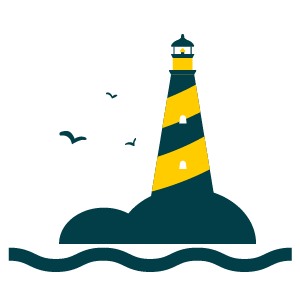
Background and rationale
For coastal regions and communities around Europe, tourism is a highly important economic activity that provides substantial employment. Coastal and maritime tourism represents about half of all tourism global and is the largest sector of the EU Blue Economy. In 2019 (the last year prior to covid for which there is data) coastal tourism employed 2.8m people in the EU, generating a GVA of €81.5bn (EU Blue Economy Report, 2023). The sector is highly dependent on the quality of marine and coastal environments but can also impact directly on those environments. Many of its activities also depend on coastal infrastructures, including for example small harbours and marinas, that provide an interface between the land and the sea but are in themselves exposed to risks from climate change and extreme weather impacts.
There are significant challenges and opportunities for coastal and marine tourism to achieve a transition from its currently unsustainable model and to manage exposure to environmental, economic and social risks. The aim of this IA is to support interdisciplinary research across natural sciences, social sciences, humanities, and technology, as well as innovation to enable a just and efficient transition to low-impact, regenerative and sustainable tourism and coastal business, that increases also the resilience of the communities in which these businesses are embedded.
Key thematic areas
Low-impact, regenerative coastal tourism
An increasing global population and middle class with access to disposable income, has led to a rise in tourism and the numbers of people travelling for recreational purposes. The covid pandemic, however, caused a major disruption to international tourism and impacted tourism business globally, including 75 million job losses and a tourism-induced GDP reduction of more than €2 trillion. As the sector recovers from the impacts of the pandemic, there are substantial opportunities for change and adaptation towards a more sustainable business model. Research in this area is needed to guide policy and planning to support a just and efficient transition towards low-impact, regenerative tourism.
- Identify opportunities for viable tourism products/services that help to reduce negative environmental impact, manage and restore local environments, and revitalise local and traditional culture and heritage.
- Analysis of the energy usage and needs across marine and coastal tourism and strategies for reducing sectoral energy use and green-house gas emissions, transitioning to renewable energy including electrification of recreational vessels and ground transportation.
- Shifting the attitudes and behaviours of tourists to enable a transition to a lower impact, regenerative business models, reducing pollution, water and energy usage.
- Understand willingness to pay for environmental measures to inform financial models and transition strategies to low-impact tourism.
- Identify opportunities for citizen science as a tool to deliver co-benefits in terms of ocean literacy, environmental protection/restoration, and an activity that can form part of a viable business product.
- Development of innovative digital products and services that inform decision-making and creation of new products for tourism operators.
Resilient coastal businesses
Small scale coastal businesses operate in a continually evolving socio-economic context where seasonality, limited access to labour and tight profit margins are commonplace. These businesses are also highly dependent on the quality of the marine and coastal environment and are in the front line of climate and weather impacts. Multiple use of the same area could also represent a conflict. An improved understanding of these pressures can inform more effective policies, planning and product development, as well as strategies to foster resilience in coastal communities and businesses and support diversification of coastal and marine-based enterprises.
Activities should address the following aspects:
- Research to understand risks posed to coastal business and communities by climate change impacts (ocean warming, sea-level rise, biodiversity loss, etc.) and extreme weather events.
- Research to understand the risks posted to coastal business by political and social changes
- Strategies for strengthening resilience and preparedness of coastal businesses against climatic, geological and anthropogenic hazards and social and economic risk factors.
- Social innovation to enable diversification of coastal and marine-based enterprises. Social innovation is currently hardly funded by European or National funds and research on mecahnisms to sustain such business is needed .
- Assess the impacts of diverse coastal activities (including small ports and marinas), on marine and coastal environments and co-dependencies between tourism and coastal and marine ecosystem health.
- Research to better understand the relationships and interdependencies between marine and coastal tourism and the communities in which they operate, including challenges linked to social/community unrest generated by mass tourism.
- Improved understanding of financing instruments and incentves for innnovation that support job creation in coastal communities.
- Improve understanding of the social and cultural costs and benefits of coastal and marine tourism and the cultural context for fostering a sustainable and just transition to low-impact, regenerative tourism.
Resilient coastal infrastructures and nature-based solutions
Coastal tourism relies in large part on built infrastructures such as small harbours, piers and marinas, that enable access for operators and tourists to the marine environment. These infrastructures are by nature of their location, highly exposed to the impacts of climate change (e.g. sea-level rise), geological hazards, coastal erosion and extreme weather events. Understanding the risk to existing infrastructures and advancing innovative approaches to design and adaptation of coastal structures is a key component underpinning sectoral resilience. A transition towards Nature-based Solutions (NbS) (see definition see 2020-020-En.pdf) is an important opportunity to reduce the carbon footprint of activities linked to tourism. NbS can promote the development of sustainable blue tourism in coastal areas, including strategies to combat coastal erosion, control the spread of harmful alien species, and potentially ensure the quality of bathing waters.
- Analysis of risks posed to coastal infrastructures by climate change and extreme weather events and strategies to protect /re-design built structures and mitigate against risks that potential damages to such structures may poses to safety and security of coastal communities and businesses.
- Advance opportunities to embed technologies in coastal infrastructures that can monitor environmental conditions, deliver early warning of risks/hazards and support long-term data on coastal conditions and environmental change.
- Effective Investment in and conservation of natural assets that benefit both costal tourism and ecosystem services / Nature-based Solutions (e.g. through carbon storage, flood protection). e.g. mangroves, coral reefs.
- Enabling diversification by working with existing and emerging maritime sectors to provide tourism opportunities linked to offshore energy, aquaculture operations, fisheries and ports.
- Investigate, promote and showcase the coexistence of coastal and maritime tourism and marine protected areas.
- In certain areas, infrastructures to support tourism or other economic activities may be seasonal and other permanent. Research in the diversity of the demand per region of the necessary infrastructures (stable or mobile ones) and feedback to policy makers in approaching coastal development for local economic activities.
- Research on the impact (positive or negative) of subsidies/allowance on different economic activities is key for the long term sustainability of such activities
- Research on comparative legal frameworks across different European regions to support coastal activities concerning a the most effiecient and sustainable way.
Implementation, enablers, and synergies
Interdisciplinary approaches including technology, data, digitalisation, social science and humanities can provide solutions to enable coastal and marine tourism, not only to transition to a more sustainable, regenerative business model, but to create new tourism offerings and opportunities. In a European context, marine environmental data portals such as EMODNet provide users with access to a major source of information that can be used to improve decision-making and product development. Data and technological innovation are also critical enablers to inform the design and maintenance of coastal infrastructures.
However, technology will need to be paired with a better and comparative understanding of socio and cultural factors to frame appropriately the potentials of different regions both in terms of different economic activities as well as infrastructures, labour markets and legal and financial support for innovation. The impact of major societal changes like migration flows and legal framework, as well as political tensions have a major role on the capacity to look at the coastal resources and maximise their development with small impact on the environment. Such research needs to be integrated into the overall research strategy.
Research on mapping accurately specific public policies around water provisions, desalinisation and marine based infrastructures management would also be crucial to set the path for future interventions.
Outcomes and impacts
- Knowledge and guidance for public authorities and development agencies (national, local), to inform policy and planning to enable a just and efficient transition for coastal and marine tourism to a sustainable and regenerative business model.
- Greater understanding for key stakeholders (coastal businesses, community leaders, local authorities, etc.) of the risks posed by climate change impacts, extreme weather and geological hazards.
- Greater understanding of the social and cultural context underpinning coastal tourism and strategies to ensure that transition to a new sustainable business model safeguard the tangible and intangible cultural heritage of local communities. In particular, the impact of marine archaeology research for local infrastructures and developing scientific hubs for advanced research.
- Strategies to foster greater resilience for coastal business and communities in the face of climate change, extreme weather events, geological hazards, and social and economic impacts to inform all stakeholders from individual businesses to national policy and planning authorities (including social phenomena on local business, such as migration flows on local labour markets or refugee management on health care demand).
- Measurable reduction in the negative environmental impacts of coastal and marine tourism in Europe, linked to reduced pollution, GHG emissions and energy usage, water usage, and impact on local marine and coastal environments
- Improved strategies and policies for delivering positive change in the behaviours and attitudes of tourists towards reducing deleterious environmental, social and cultural impacts arising from their own touristic activities and supporting an interest/willingness to participate in regenerative activities such as nature restoration and citizen science.
- Greater deployment of innovative technologies, and use of data and digital products to inform low-impact tourism activities and products.
IOPAN - Partner
IPCB-CNR - Partner
IRTA - Coordinator
ISA-UL - Partner
ISC - Partner
ISSNOVA - Partner
ITB - Partner
ITU - Partner
IU-DEBIEN - Partner
JU - Partner
Kickoff meeting highlights
Koc - Partner
Kongsberg - Partner
KTH - Coordinator
KTU - Partner
LA - Coordinator
Latvian Council of Science - LZP

LU - Partner
MAA - Monitoraggio e Analisi Ambientali
Core facility for Environmental Monitoring & Analysis
Francesca Margiotta Francesca.margiotta@szn.it
Marine Institute

Marine Stations Helgoland Sylt
Angelika Dummermuth angelika.dummermuth@awi.de
MASAF - Self-Funded Partner
Matís - Partner
MC - Partner
MCAST - Partner
MESOCOSMI CRIMAC
CRIMAC – Calabria Marine Centre
Functional Area: “Coastal and deep environments monitoring - Mesocosms”
Teresa Romeo Teresa.romeo@szn.it
MI - Partner
MIC - Partner
Ministry of Economic Affairs and Climate Policy
Bezuidenhoutseweg 73, 2594 AC, The Hague

Ministry of Infrastructure and Water Management
Rijnstraat 8, 2515 XP Den Haag, Netherlands
Ministry of Infrastructure and Water Management

Montenegro - Ministry of Education, Science and Innovation - MESI

MOTax
Marine Organism Taxonomy
Diana Sarno Diana.sarno@szn.it
N/R Laura Bassi
Franco Coren fcoren@ogs.it
Michela Dal Cin mdalcin@ogs.it
National Research Council

NERSC - Coordinator
News & events
News & events
Stay up to date with the latest news, events, and success stories in building a resilient blue economy for a better future.
Featured article
Upcoming events
6 OCT 2025
The Sustainable Blue Economy Partnership, a European partnership under the European Commission’s Research & Innovation Framework Programme Horizon Europe, is pleased to announce the launch of its third Joint Transnational Call. This third call is co-branded by the UN Decade of Ocean Science for Sustainable Development as a means of stimulating new initiatives in co-designed and co-delivered knowledge and solutions for a sustainable ocean economy.
An information webinar for potential applicants was held to answer any questions regarding the call. You can re-watch it here or download the presentation.
Learn more ➝
Stay updated
News
Blue Synergies in Action: Sustainable Blue Economy and Waterborne Launch Joint Dialogue
On 8 April 2025, the Sustainable Blue Economy Partnership, jointly with the Waterborne Technology Platform coordinating the Zero-Emission Waterborne Transport partnership and in collaboration with the EU Mission "Restore our Oceans and Waters", brought together leading experts, EU projects, and stakeholders from across Europe for a technical workshop on ports, marinas, logistics, and sustainable fisheries.
Learn more ➝
Exploring market opportunities in the blue economy: Sustainable Blue Economy Partnership co-funded projects at BlueInvest Day 2025
In March 2025, two projects co-funded by the Sustainable Blue Economy Partnership participated in BlueInvest Day, a flagship event organised by the European Commission during the European Ocean Days to showcase champions of innovation, investment, and sustainability in the blue economy, bringing together entrepreneurs, investors, and innovators.
Natalia Mæhle, coordinator of the AQUABALANCE project, balancing economic, environmental, and social sustainability in the European aquaculture industry, and Ruth Higgins from ARCFISH, the Digital Twin of the Ocean for Arctic Fisheries, joined the event in Brussels to explore commercialisation pathways, networking opportunities, and innovation in the blue economy. They share their experiences and key takeaways from the event.
Learn more ➝
Sustainable Blue Economy Partnership’s Projects Now Endorsed as UN Ocean Decade Actions
Fourteen research and innovation projects co-funded under the Sustainable Blue Economy Partnership's first joint transnational call are now officially recognised by the UN Decade of Ocean Science for Sustainable Development 2021-2030 (‘Ocean Decade’) as UN Ocean Decade Actions. This acknowledgement underscores their contribution to global efforts towards a climate-neutral, sustainable, resilient, and competitive blue economy.
Learn more ➝
At the nodal point: regional sea basin representatives meet in Brussels
On Monday, 3 March 2025, the Sustainable Blue Economy Partnership's regional sea basin nodes gathered for a meeting in Brussels. Hosted at the Tuscany Region liaison office in collaboration with Tour4EU, the meeting brought together partners, nodes and stakeholders to assess progress, refine strategies, and strengthen regional cooperation in advancing a sustainable blue economy across Europe’s maritime basins.
Learn more ➝
Past events
The Sustainable Blue Economy Partnership (SBEP) has launched in 2025 its first Thematic Portfolio Call for Interest, aiming to connect ongoing funded projects (whether financed by SBEP or other national, regional or European mechanisms) to create and boost networking activities. The Portfolios will be running for a 2-year period, from 2026 to 2028, and focus on two topics: innovations and digitalisation for low-impact sustainable small-scale fisheries management in EU sea-basins, and innovations for boosting sustainability in marine algae cultivations and circularity in the blue bioeconomy.
An information webinar for potential applicants was held to answer any questions regarding the call. You can re-watch it here or download the presentation.
More info ➝
NIBIO - Coordinator
NMBU - Coordinator
NMBU - Partner
Nofima - Coordinator
NORCE - Partner
Notpla Ltd. - Self-Funded Partner
NTNU - Coordinator
Ocean Bottom Magnetometers
Domenico Di Mauro domenico.dimauro@ingv.it
Ocean Bottom Seismometers/hydrophones
Gioacchino Fertitta gioacchino.fertitta@ingv.it
Antonio Costanza antonio.costanza@ingv.it
Ocean literacy
The Sustainable Blue Economy Partnership promotes Ocean Literacy with a multi-faceted, cross-cutting approach that includes, among others, an Ocean Literacy Toolkit, podcasts and short videos, webinars and training for co-funded projects, and targeted efforts to engage ocean businesses. Through these activities, the Partnership aims to encourage the behavioural and attitudinal changes needed to drive the sustainable transformation of Europe’s blue economy. Consequently, it seeks to generate interest in sustainable maritime innovations, career options, investment opportunities, and generally the quest of reconciling economic development with marine ecological integrity. Throughout these efforts, industry actors are targeted to help embed the corporate environmental responsibility needed to affect the transition; the thematic foci are guided by the Intervention Areas and align with the EU4Ocean Coalition.
The Ocean Literacy Toolkit is fully accessible and downloadable below. It is intended both for co-funded projects and the stakeholder community at large, and will be updated regularly to account for the latest developments.

You can also access the Toolkit here.
Ocean Science Centre Mindelo (OSCM)
OSCM is operated by GEOMAR in collaboration with a local partner in Cape Verde, with strong connections with the European research community.
Björn Fiedler bfiedler@geomar.de
Anja Wenzel awenzel@geomar.de
OE - Partner
OGS - Partner
OGS Seneca Aircraft
LiDAR, IMU, Camera, Hyperspectral & Thermal, Gas Analyzer, Strapdown Gravity, Magnetometer
Fausto Ferraccioli fferraccioli@ogs.it
Paolo Paganini ppaganini@ogs.it
OTN - Self-Funded Partner
Paleomag. Lab
Laboratory of Paleomagnetism
Aldo Winkler Aldo.winkler@ingv.it
Panarea NatLab (Biogeochemical Lab, ROV and acoustic data acquisition)
Cinzia De Vittor cdevittor@ogs.it
Valentina Volpi vvolpi@ogs.it
Valentina Esposito vesposito@ogs.it
Partnership decides on first batch of co-funded projects
Partnership kicks off in Rome
Partnership launches second joint transnational call
Partnership Symposium: on course towards a sustainable blue economy
Paving the way for the blue transformation
PEGASO
Multidisciplinary shallow water seabed observatory
Gianluca Lazzaro Gianluca.lazzaro@ingv.it
Philia
George Petihakis gpetihakis@hcmr.gr
PORTO-MUIÑOS - Partner
Poseidon
George Petihakis gpetihakis@hcmr.gr
POSEIDON, calibration lab
George Petihakis gpetihakis@hcmr.gr
POSEIDON, FerryBox system
George Petihakis gpetihakis@hcmr.gr
POSEIDON, Fixed Platforms - PYLOS, E1-M3A, HCB
George Petihakis gpetihakis@hcmr.gr
POSEIDON, mobile platforms - gliders
George Petihakis gpetihakis@hcmr.gr
Project Title Culture of a wide range of low trophic species to boost sustainable production of Blue Food and reduce environmental footprint
BLUEBOOST fits priority area 3.2.3 and aims to demonstrate that co-culture of a wide range of low trophic species with established species can boost current European aquaculture of blue foods and feeds while reducing the environmental footprint and moving towards a carbon-neutral aquaculture blue economy. The consortium consists of partners from eight countries (Spain, Portugal, Poland, Italy, Brazil, Sweden, UK, Finland) and three seas / oceans (Atlantic – north and south, Mediterranean, Baltic). Partners are experts in the ecology, hydrobiology, culture of low trophic species, integrated multitrophic aquaculture (IMTA), economics and life cycle assessment (LCA) of blue food and feed production.
BLUEBOOST aims to provide knowledge based solutions that will enable the aquaculture industry to overcome bottlenecks that inhibit Governments and businesses, following an impact pathway that can increase the volume and diversity of aquaculture products, reduce environmental footprint towards a carbon-neutral economy, raise the circularity and competitiveness of the blue economy, provide new products, restore ecosystems, create jobs and increase ecosystems resilience against climate change. The partners will work with six different IMTA systems and a wide range of species from different trophic levels to evaluate the use of waste streams from traditionally farmed species to provide nutrients and feed for low trophic species. The nutrients and carbon fluxes will be mapped, and the environmental footprint of six systems with and without IMTA, determined employing LCA to demonstrate the benefits and trade-offs of incorporating extractive low trophic species in combination with traditional aquaculture species. Self-financed partners will examine new products, use of macroalgae for sustainable food packaging and test low trophic blue feed ingredients in the diets of marine organisms. To restore ecosystems, threatened oysters species will be farmed in Italy and Spain, whereas coastal ponds of the Ebro Delta will be offered as new aquaculture sites and protection against climate change related sea level rise and storm intensification.
We envisage that BLUEBOOST will involve (co-creation/co-design) and impact all stakeholder levels providing societal value creation such as: (a) technical advances that provide new sustainable production methods and products; (b) reduced environmental footprint of blue food and feeds; (c) environmental restorative aquaculture practices; (d) improved economics with increased volume and diversity of production; (e), policy-making to provide conditions for and to drive desired change and (f) low carbon products and business investments to meet consumer demand. This win-win scenario will deliver improved diversification of blue foods and feeds and, at the same time, increase production volumes and quality, to improve the competitiveness of European and Brazilian aquaculture while reducing the industries environmental footprint.

Projects
Projects
The partnership is hosting 19 research and innovation projects from its first Joint Transnational Call (2023), and another 24 will soon be funded as part of its second Call (2024). All ongoing projects can be found below.
- First Call: 19 Projects Brochure Abstracts - see project pages below
- Second Call: 24 projects recommended for funding (Abstracts) - project pages will be added on the website soon
Filter by category
Stay updated
PVL - Partner
R/V Anton Dohrn
Simonepietro Canese Simonepietro.canese@szn.it
Regional Fund for Science and Technology

Registration "Charting the course towards a Sustainable Blue Economy" Symposium
Registration "Charting the Course towards a Sustainable Blue Economy" Symposium
Date: 13-14 February 2024
Location: Royal Museum of Fine Arts Belgium (Rue du Musée 5, 1000 Brussels)
By filling in this form, you consent to having your data shared with the Sustainable Blue Economy Partnership. Your information will only be used internally by the Partnership. For more information, see the Partnership's Terms of Use and Privacy Policy.
You have the right to withdraw your consent at any given time, although this will not affect the lawfulness of processing based on your given consent prior withdrawal. You have a legal right to request access, correction and deletion of your personal information (this includes photo and video). You also have the right to restrict the processing of your personal information.
Photography and social media coverage will be taking place during the event. By filling out the form, you agree footage or images of you, taken in the natural course of proceedings, will be published in the context of the event.
In case you have any questions or requirements on the topic of GDPR and data processing and image usage, please contact info@bluepartnership.eu.
Registration - Kick-off meeting of funded projects (2023 Joint Call)
Registration - Kick-off meeting of funded projects (2023 Joint Call)
Date: 25-26 September 2024
Location: Madrid, Spain (address: Agencia Estatal de Investigación - Salón de Actos (ground floor) - AEI, Calle Torrelaguna 58 bis, 28027 Madrid, Spain)
By filling in this form, you consent to having your data shared with the Sustainable Blue Economy Partnership. Your information will only be used internally by the Partnership. For more information, see the Partnership's Terms of Use and Privacy Policy. You have the right to withdraw your consent at any given time, although this will not affect the lawfulness of processing based on your given consent prior withdrawal. You have a legal right to request access, correction and deletion of your personal information (this includes photo and video). You also have the right to restrict the processing of your personal information.
Photography and social media coverage will be taking place during the event. By filling out the form, you agree footage or images of you, taken in the natural course of proceedings, will be published in the context of the event. In case you have any questions or requirements on the topic of GDPR and data processing and image usage, please contact info@bluepartnership.eu.
For more information about the kick-off, consult the dedicated event page here.
Research Council Faroe Islands
Bryggjubakki 12, P.O.Box 259, FO-110 Tórshavn

Research Council of Norway
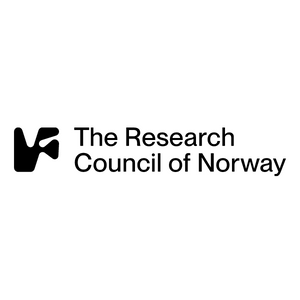
Research Ireland
Emma McGrath
Maria Nash

Resource efficient blue food production from small underutilized pelagic fish species (RE-BLUE)
Herring (Clupea harengus) and sprat (Sprattus sprattus) are two low trophic level fish species which dominate the fisheries of many Northern/Central European countries. They are, however, massively underutilized in food production. This is increasingly questioned viewed against the current geopolitical situation raising the need of affordable, nutrient dense and locally produced food, and against the ongoing dietary protein shift where consumers seek healthy and sustainable protein sources to replace red meat. Herring and sprat have as low climate footprint as pulses and are rich in high quality proteins, important fatty acids, vitamins and minerals; many of which are missing in red and/or green protein sources. Combining climate impact and nutrient density data, herring/sprat were recently ranked as the most favorable animal protein sources common to the EU.
Based on these incentives, the multi-actor RE-BLUE project will explore new scalable food value chains from the large parts of the herring/sprat catches that either do not enter the food chain (whole fish landed as feed) or leave it (filleting rest raw materials, RRM, also going to feed). Together, these biomass streams make up ca. 60-95% (!) of total herring/sprat catches in the countries of this consortium. Our specific aims are to design, align and combine process-steps which are tailored to tackle the very small size of the “fodder fish”, presence of enzyme-dense organs, high levels of pigments/pro-oxidants/small bones and occasional abundance of dioxins, dioxin-like (DL) PCB´s and PFAS.
An innovative cutting/filleting line which gradually can trim off head, intestines, viscera, and spine even from very small herring/sprat (<55g) forms a project core. Whole fish, fish subjected to different degrees of trimming, or sorted regular RRM will then be used in: (i) mechanical mince production, washing and freezing, (ii) conversion of pre-frozen minces to “falafel” balls/burgers/sausages with and without antioxidant-rich plant RRM or seaweed, (iii) enzymatic hydrolysis into savory ingredients, (iv) fermentation with salt into a fish sauce, (v) direct mixing and extrusion into a “pulled fish product”, with/without plant-based proteins and (vi) acid marination. (i)-(vi) are evaluated with and without pre-dipping of raw materials in new antioxidant solutions. Product prototypes will be characterized in terms of e.g., ash, nutrients, sensorial and volatile compound profiles, color, lipid oxidation, lipolysis, proteolysis, microbial growth and when required, dioxins/PCBs/PFAS. In parallel, fundamental understanding on how enzymatic/non-enzymatic reactions in small pelagic fish respond to different processing variables will be gained. Results can be extended to other European small fish species regarded invasive (e.g., round goby) or underutilized (e.g., sand eels, sardines) and are expected to have major societal impact related to e.g., food preparedness, public health, and national/EU policies.
Resources
Resources
This comprehensive guide provides valuable insights into your brand's values, guidelines, and visual elements, ensuring consistent and impactful brand representation across various mediums.
Core & strategic documents
Other
RISE - Partner
ROV Holland I
Marine Institute

Veronica Cunningham veronica.cunningham@marine.ie
Aodhan Fitzgerald Aodhan.Fitzgerald@marine.ie
Frank Armstrong Frank.Armstrong@marine.ie
RV ATAIR, RV WEGA* or RV DENEB*
*Only one of the two vessels is available each year
Berit Brockmeyer berit.brockmeyer@bsh.de
RV Celtic Explorer
Marine Institute

Veronica Cunningham veronica.cunningham@marine.ie
Aodhan Fitzgerald Aodhan.Fitzgerald@marine.ie
Frank Armstrong Frank.Armstrong@marine.ie
RV Elisabeth Mann Borgese
Regine Labrenz regine.labrenz@io-warnemuende.de
Joanna Waniek joanna.waniek@warnemuende.de
RV Heincke
Ingo Schewe polcoord@awi.de
RV Mare Nigrum
Stefan Florescu stefan.florescu@geoecomar.ro
Mihaela Melinte melinte@geoecomar.ro
RV Tom Crean
Marine Institute

Veronica Cunningham veronica.cunningham@marine.ie
Aodhan Fitzgerald Aodhan.Fitzgerald@marine.ie
Frank Armstrong Frank.Armstrong@marine.ie
RV Uthörn
Michael Klages Michael.Klages@awi.de
S2AQUA - Partner
SAP - Partner
Satellite Direct Receiving Station and High Performing Computing Environment
Adriano Lima adriano.lima@aircentre.org
Scientific Research Fund - FWO

SDU - Partner
SEA - Partner
SES - Partner
SES - Self-Funded Partner
Shota Rustaveli National Science Foundation of Georgia - SRNSFG

Siemens - Partner
SINTEF - Coordinator
SLU - Partner
SOCIB Glider fleet
Joaquín Tintoré jtintore@socib.es
Nikolaos Zarokanellos nzarokanellos@socib.es
Spanish Foundation for Science and Technology
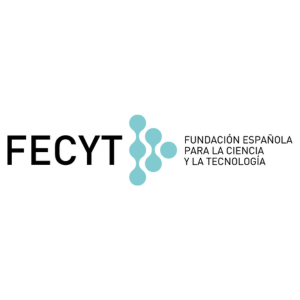
Stazione metereologica con sonde multiparametriche e modem acustici
Augusto Passarelli Augusto.passarelli@szn.it
SUB - Coordinator
Survey - Enhancing human capacity to maximise impact
Survey - Enhancing human capacity to maximise impact
As part of SBEP Task 7.6 “Enhancing human capacity to maximise impact”, we kindly ask you to invest 10 minutes in replying to this survey by 16 August. The survey will give us input on human capacity needs, gaps, and activities. Your input will form the basis for recommendations on how the Partnership can address capacity building through its co-funded calls and other activities.
Survey Stakeholder Mapping
Stakeholder Mapping Survey
The purpose of this stakeholder mapping is to establish a community of practice which will be engaged by the Sustainable Blue Economy Partnership in future exchanges related to the transformation to a sustainable blue economy. With this survey, the Partnership aims at collecting accurate data on relevant stakeholders (domain of activity, sea-basin, sector, social media channels). Please note that by stakeholders we here mean institutions, organisations, businesses, etc. We are not targeting individuals and one reply to the survey per entity is therefore sufficient.
By filling in this survey, you consent to having your data shared with the Sustainable Blue Economy Partnership. Your information will only be used internally by the Partnership. For more information, see the Partnership's Terms of Use and Privacy Policy.
Sustainable Blue Economy Partnership Transnational Access Call to Research Infrastructures 2025
“PILOTING ACCESS TO SHARED RESEARCH INFRASTRUCTURES AT PAN-EUROPEAN SCALE TO REINFORCE CAPACITIES AND SUPPORT THE TRANSFORMATION OF THE BLUE ECONOMY”
The Sustainable Blue Economy Partnership is launching the first call for access to Research Infrastructures [2025 TA Call to RIs], enabling applicants from the pan-European blue economy community to submit a proposal for utilising the Research Infrastructures (RIs) made available by providers partners of the Partnership. The call aims to implement the Partnership’s Strategic Research and Innovation Agenda (SRIA) by addressing key intervention areas, supporting internationalisation, and promoting Open Data and Open Science. It seeks to enhance innovation, align national investments with EU strategies, and improve operational efficiency by optimising the use and sharing of RIs.
The Sustainable Blue Economy Partnership offers a portfolio of 49 Research Infrastructure services through the integrated availability of the following typology of RIs:
- Research Vessels
- Fixed platforms, auxiliary devices and experimental stations
- Mobile platforms (AUVs, gliders, aircraft)
- Portable equipment
- Analytical labs and Test benches (pressure chambers, pools. calibration/inter-calibration bench, include sample analysis)
- High Performance Computing Centres
Visit the CATALOGUE of Research Infrastructures for more information.
The 2025 SBEP Transnational Access Call to Research Infrastructures is open to blue economy stakeholders’ communities (research institutions, private companies, NGOs, etc…), inside and outside the Partnership Consortium from countries belonging or associated to the Partnership and beyond. In their R&I proposal for the request of RI access, applicants must address the Intervention Areas of the Partnership 2024:
(1) Digital Twins of the Ocean at regional sub basin scale
(2) Blue economy sectors, development of marine multi-use infrastructures
(3) Planning and managing sea-uses at the regional level
(4) Blue Bioresources
Proposals must address at least one geographical area among: Mediterranean Sea, Black Sea, Baltic Sea, North Sea, Atlantic Ocean. If applicable, proposals must indicate regional areas (e.g. Arctic Ocean, Barents Sea, Celtic Sea, Adriatic Sea, Aegean Seas, etc., as far as they belong to one of the European Sea Basins cited above) or their scope must be proved to be relevant for one or more above mentioned geographical areas.
Applicants to the 2025 SBEP TA Call to RIs shall be employed by an organisation in any country of the world while the Project Leader PI shall be employed by an organisation in one of the Countries involved in the Partnership (Belgium, Brazil, Bulgaria, Cyprus, Denmark, Estonia, Faroe Islands, Finland, France, Georgia, Germany, Greece, Iceland, Ireland, Italy, Latvia, Lithuania, Malta, Montenegro, the Netherlands, Norway, Poland, Portugal, Romania, Slovenia, Spain, Sweden, Tunisia, Turkey, Ukraine). To be eligible, a consortium must involve at least two members of the team employed by Institutions from two different countries and requesting access to a beneficiary making RIs available as providers.
Applications in this call must be impact-driven contributions to the transformation into a blue economy for a more resilient future and towards carbon neutrality targets, following an impact pathway approach. Each project should therefore describe it's impacts accordingly. The possible users of the outcomes of the projects should be identified in the application. Reflections on contribution to relevant initiatives will be appreciated as well as on stakeholders’ engagement, including a broad range of actors, i.e. industry partners, citizens, and policy makers.
A single step procedure will apply to this Access Call; the submission of proposals is mandatory. Applicants will have up to 29 April 2025, 15:00 CEST to submit their proposals.
Informative Webinar
A general information webinar took place on 28 February 2025. Find here the recording of the webinar and the slides used in the presentation.
Piloting access to shared Research Infrastructures at pan-European scale to reinforce capacities and support the transformation of the blue economy
Fund for Scientific Research - FRS - FNRS

Estonian Research Council
Rue Guimard 11/13, 1040 Brussels, Belgium

Research Council Faroe Islands
Bryggjubakki 12, P.O.Box 259, FO-110 Tórshavn

Marine Institute

Latvian Council of Science - LZP

Research Council of Norway

Commission for Coordination and Regional Development of the Centre - CCDRC

Regional Fund for Science and Technology

Dutch Ministry of Agriculture, Nature and Food Quality - NWO
Bezuidenhoutseweg 73, The Hague

Sustainable Blue Economy Partnership’s first joint transnational call
“The way forward: a thriving sustainable blue economy for a brighter future”
The Sustainable Blue Economy Partnership, a European partnership under the European Commission’s Research & Innovation Framework Programme Horizon Europe, is pleased to announce its first Joint transnational call entitled « The way forward: a thriving sustainable blue economy for a brighter future ».
The vision of the Sustainable Blue Economy Partnership is to design, steer and support a just and inclusive transition to a regenerative, resilient, and sustainable blue economy. This EU Partnership aims to boost the transformation needed towards a climate-neutral, sustainable, productive, and competitive blue economy by 2030 while creating and supporting the conditions for a sustainable ocean for the people by 2050.
This first co-funded call aims to support transnational research and innovation projects (36 months) addressing one of the five priority areas below:
- Planning and managing sea-uses at the regional level
- Development of offshore marine multi-use infrastructures to support the blue economy
- Climate-neutral, environmentally sustainable, and resource-efficient blue food and feed
- Green transition of Blue Food production
- Digital Twins of the Ocean (DTOs) test use cases at EU sea-basins and the Atlantic Ocean
These five priority areas were selected to maximise participation while reinforcing the European blue economy through innovative solutions and improved resilience of marine ecosystems. The priority areas embrace actionable routes from science to policy to observe, assess and mitigate the impacts of climate change on vital ecological assets such as biodiversity and other ecosystem services on which our economies depend, thus supporting coastal communities.
Projects in this Co-funded call must be impact-driven contributions to the transformation into a blue economy for a more resilient future and towards carbon neutrality targets, following an impact pathway approach.
Projects must be developed at a pan-European level and in the different European sea basins: the Mediterranean, the Black Sea, the Baltic Sea, the North Sea and the Atlantic Ocean and establish close cross-sectorial cooperation in the science, innovation, and economic sectors. Projects are expected to consider several European sea basins or, at least, to consider the impact of the projects on several European sea basins.
The first Sustainable Blue Economy Partnership (SBEP) Co-funded call pools national and regional financial resources through the participation of 36 funding organisations from 23 countries (19 Member-States: Belgium, Cyprus, Denmark, Estonia, Finland, France, Germany, Ireland, Italy, Latvia, Lithuania, Malta, Poland, Portugal, Romania, Slovenia, Spain, Sweden, The Netherlands, 4 Associated Countries: Faroe Islands, Iceland, Norway, Türkiye and 1 third country: Brazil) responsible for funding research and innovation actions in the blue economy, with financial support from the European Commission. The total budget is about 50 Million Euros.
To be eligible, research consortia must include partners from a minimum of three independent legal entities from three different countries participating in the call. Self-funded partners including partners from countries (and/or regions) not participating in this Co-funded call are allowed but do not contribute to the minimum eligible consortium size. Stakeholder engagement as partners or self-funded partners is encouraged (according to national/regional regulations) to enhance innovation, policy, and societal relevance and ultimately the impact of the projects.
For more information about the 19 projects selected for funding, priority areas, consortium members, and project abstract, please consult this detailed description.
Fund for Scientific Research - FRS - FNRS

Estonian Research Council
Rue Guimard 11/13, 1040 Brussels, Belgium

Research Council Faroe Islands
Bryggjubakki 12, P.O.Box 259, FO-110 Tórshavn

Marine Institute

Latvian Council of Science - LZP

Research Council of Norway

Commission for Coordination and Regional Development of the Centre - CCDRC

Regional Fund for Science and Technology

Dutch Ministry of Agriculture, Nature and Food Quality - NWO
Bezuidenhoutseweg 73, The Hague

Sustainable climate-Friendly quality fOOD Ingredients from MArine side-stReams
Today’s food systems face numerous challenges, with climate change being a major one. Fisheries and aquaculture are particularly vulnerable to the adverse effects of climate change. Simultaneously, seafood plays a critical role in the transition towards more sustainable and nutritious food systems.
How can we enhance the resilience of the European seafood value chains?
How to improve resource use efficiency and sustainability within the seafood industry?
The seafood processing industries generate substantial quantities of side-streams, often discarded, or used for low-value purposes such as animal feed or fish oil. However, these side-streams represent a valuable source of bioactive compounds with the potential for added value in higher-end markets, such as nutraceuticals and functional foods.
FOODIMAR aims to develop new industry-relevant solutions from fisheries and aquaculture side-streams for climate-friendly, cost-effective, sustainable, and high-quality food market applications. The project centers around three pilot studies: (1) the Norwegian pilot focuses on fisheries side-streams from the North Sea, (2) the Danish pilot revolves around the utilization of jellyfish by-catch from the Baltic Sea, and (3) the Turkish case deals with aquaculture side-streams from the Mediterranean Sea. These pilot studies serve a dual purpose: they showcase representative value chains in European regions and sea basins while simultaneously developing solutions tailored to each unique context. This approach ensures that the solutions are not only effective at the local level but also possess broad applicability across Europe.
FOODIMAR’s consortium comprises six partners, including a commercialization partner from Turkey, all of whom bring substantial knowledge and expertise gained from projects like WaseaBi, GoJelly!, SeaSnacks, and Baltic Blue Biotech Alliance. This collective experience in the valorization of marine resources and innovation is a cornerstone of the project’s success.
FOODIMAR is committed to developing innovative, cost-effective, and climate-friendly methods to produce high-quality marine collagen, gelatin, and glycosaminoglycans (GAGs) to meet the industry and consumers’ needs.
The smart valorisation of side-streams and a shift towards a circular economy, contribute not only to the physical and economic resilience of the European seafood value chains but also to the environmental and ecological sustainability of the industry. FOODIMAR’s innovations exceed current standards and facilitate further development, assessment, training, knowledge transfer, diversification, industry uptake, and job creation. In the long term, FOODIMAR’s impact will yield a clear, reproducible blueprint for high-quality resilient, ecologically sound food-grade solutions, ensuring food and nutrition security within planetary boundaries.

Sustainable, Reliable and Socially Acceptable Modular Floating IslAnds for Multi-use Offshore Spaces
The growth of the world’s population over the past decades has been impressive. Present estimates show that the process is likely to achieve a peak of 11 billion within the next 100 years. Such massive growth implies an ever-increasing need for space (urban, infrastructural, industrial), resources (water, energy, food) and economy. The ocean plays a crucial role in this challenge. FAMOS aims to contribute to the thematic priority of development of offshore marine multi-use spatial concepts. From our perspective, pivotal questions include: is humanity ready to live on the ocean surface due to a lack of functional land? How do we create sustainable, reliable, and socially acceptable multi-use offshore spaces?
Adopting floating structures appears more sustainable than using bottom founded structures both in terms of environmental and economic aspects. Although some aquaculture or solar energy devices have been developed based on floating sub-structures, most of them are limited to near-shore areas in relatively shallow waters and mild wave conditions. To fully exploit exposed offshore marine areas, FAMOS must go beyond the state of the art by addressing significant challenges posed by possible occurrences of enormous waves. Considering the size of FAMOS in respect to the call, to balance resources and efforts the project will focus on the achievement of the following detailed objectives:
- Design and demonstrate novel floating island concepts in three European basins: Mediterranean, North, and Baltic Seas.
- Assess the synergies among the islands and breakwater and understand the risks and failure of key structural components.
- Develop efficient and accurate computational models for prediction of hydrodynamics, structural dynamics, and power performance of the multiple renewable energy devices.
- To boost the impact beyond the academic world by involving relevant stakeholders from the conceptualization phase up to the uptake of research findings into decision-making processes and policymaking.
FAMOS will benefit from the other assets already developed and available to its partners via participation in EU projects, namely: MARINET1 FP7 No262552, MARINET2 H2020 No731084, WECANET Cost Action 17105, MODENERLAND Cost Action 20109, Energy-SHIFTS H2020 No826025, gEneSys Horizon Europe No 101094326.
The project team adopts an interdisciplinary approach and considers various aspects: social and environmental, concept and configuration, floating structure technology, numerical and experimental methods. The pathways to achieve expected outcomes and impacts are driven by the logic of the theory of change. This transdisciplinary and participatory approach focuses on the actors and the context of change to achieve real and desired socio-technical change. It goes beyond mere social acceptance concepts and offers more inclusivity in involving social actors from the beginning, during, and at the end of the research and technology development process.

SYSAAF - Partner
SZN - Coordinator
TAU - Partner
Terms of Use and Privacy Policy
Terms of Use and Privacy Policy
This content describes the privacy policy of the Sustainable Blue Economy Partnership. It affects all data gathered and processed by Sustainable Blue Economy Partnership. This policy is a derivative of the GDPR, and is to be applied to Sustainable Blue Economy Partnership activities.
General Data Protection Regulation (GDPR)
The GDPR is EU Regulation (EU) 2016/679 of the European Parliament and of the Council of 27 April 2016 on the protection of natural persons with regard to the processing of personal data and on the free movement of such data. It repeals Directive 95/46/EC. The GDPR comes in force on 25 May, 2018. More information can be found on the EC GDPR site.
Sustainable Blue Economy Partnership as data owner and processor
Sustainable Blue Economy Partnership gathers personal data (name, email address, phone number, affiliation) through subscriptions on our newsletter, registrations for the Sustainable Blue Economy Partnership activities and events, and from our members. All data gathered and processed by the Sustainable Blue Economy Partnership is subject to the EU General Data Protection Regulation (GDPR), which aims to protect the privacy of all EU inhabitants. Note that the Sustainable Blue Economy Partnership partly makes use of the IT system of the Flanders Marine Institute (VLIZ) to support its website and IT services. For all information regarding the data processing from the Sustainable Blue Economy Partnership website, we refer to the VLIZ privacy policy. To send newsletters Sustainable Blue Economy Partnership makes use of Mailchimp as the data processor (see point 5 below). To register participants for events in some cases the Sustainable Blue Economy Partnership uses Eventbrite as the data processor.
Your rights as a data subject
A data subject is the natural person for whom personal data is processed. Each person has the right to be informed on what personal data is being processed and to have access to their personal data.
As a data subject, you can request:
- corrections or updates to your personal data
- to restriction or stop the processing of your data;
- to erase your data from our database
Note that not all rights are absolute: the Sustainable Blue Economy Partnership can have compelling legitimate grounds that outweigh the interests and rights of the objector (accountancy, juridical reasons...). When a request is made, the Sustainable Blue Economy Partnership may demand extra information to confirm your identity. All requests made by data subjects will be logged.
Legal grounds for data processing
There are several legal grounds for data processing. The most common is prior consent, which can be withdrawn at any time, or it can stem from an agreement with our member institutes. The Sustainable Blue Economy Partnership further has the legal obligation to process personal data for accountancy purposes, and has to keep this data according to the legal obligations. The Sustainable Blue Economy Partnership also processes personal data for common interest as the Sustainable Blue Economy Partnership maps and describes the European marine and maritime science and innovation landscape, and gathers professional data on scientists, industry representatives, policy makers and institutes for this purpose.
Services requiring personal data
For some of the Sustainable Blue Economy Partnership services and activities processing of personal data is necessary. By entering your personal data, you agree to the data processing. This data is kept for as long as the agreement lasts, and at least as long as is required for legal purposes (e.g. accountancy). For purposes concerning proof in juridical disputes, Sustainable Blue Economy Partnership may store personal data up to 10 years after the occurrence, which is the maximum legal term for placing personal claims. The Sustainable Blue Economy Partnership requires personal data for the following:
1. The Sustainable Blue Economy Partnership partners
The Sustainable Blue Economy Partnership collects data of its partner organisations. This includes the contact details (name, e-mail, address, phone number) of the delegates and alternates and any other persons from the organisations that have been nominated to participate in the Sustainable Blue Economy Partnership Working or Expert Groups, events and publications. The Sustainable Blue Economy Partnership uses this data to inform partners on the Sustainable Blue Economy Partnership activities and for partners administration (legal obligation and reporting to the member countries and European Commission). The institutional affiliation is saved for institutional partners.
2. Participation in (on-line) surveys
The personal data collected depends on the type of survey, and can contain: full name, e-mail address, country, organisation name and type, telephone number.
3. Visitor tracking on websites and cookies
The Sustainable Blue Economy Partnership makes use of the IT support and system of the Flanders Marine Institute (VLIZ) to support its website and IT services. VLIZ keeps logs of website visits - which contain: an IP address, time information, and the url visited - for bug tracking and to monitor for malicious visits. Along with the web-server logging, an anonymous visitor-tracking system is in place, to track which pages on the websites hosted by VLIZ are accessed. We also use cookies to enhance the surfing experience (e.g. so visitors only have to log in or choose the language setting once). It is indicated on each by VLIZ supported website that cookies are used and you can find a link to the VLIZ privacy policy.
4. Conference and other event participation
In order to participate in events organised by the Sustainable Blue Economy Partnership, registration is required for organisational purposes (venue size, catering services, inform participants on programme updates, etc.). Registration forms will contain a section to allow participants to subscribe to further communications by the Sustainable Blue Economy Partnership, or to remove their data once the event has taken place (this is the default option). For each event, several e-mails may be sent as part of the communication agreement: save-the-date, posting of the tentative programme, abstract submission calls, closing of the early bird or final programme, and the closing e-mail with links to pictures taken and download links for presentations.
During our events, pictures/film can be taken which can be communicated to the participant, used in Sustainable Blue Economy Partnership publications, or posted on our website and social media channels. If you do not want your pictures to be published, you can send a request for the removal of photographs or films to the e-mail address used for event administration or to info@bluepartnership.eu. Photos in which the requester are shown will be removed from our websites, social media channels and servers; for films, the film segment will be cut out or the film deleted out if the requester is clearly visible.
5. Mailing lists organised or serviced by the Sustainable Blue Economy Partnership
The Sustainable Blue Economy Partnership manages mailing lists which were created to send out Sustainable Blue Economy Partnership newsletters, to facilitate events, to allow for working-group communication, for partners in a project, etc. Each e-mail sent to these mailing lists contains an unsubscribe link and a contact address. For several communications, the Sustainable Blue Economy Partnership can make use of the services of Mailchimp for this purpose. Mailchimp functions in this instance as the data processor and for this reason the Sustainable Blue Economy Partnership has a data processing agreement with Mailchimp. You can find the Mailchimp privacy policy here (link: https://mailchimp.com/legal/).
6. Drupal, our content management system (CMS)
The Sustainable Blue Economy Partnership website is created in Drupal. For content management several editors are appointed, and these need an account to be able to log in to and change a site. All session information and changes made by the editors are stored in Drupal. Each editor can list their actions for each of the sites via a Drupal module.
Questions and Complaints
If you have any questions regarding personal data stored by Sustainable Blue Economy Partnership, you can contact the Sustainable Blue Economy Partnership – Communications, by sending us by e-mail at info@blueeconomy.eu by phone: +32 (0)2 626 16 60 or on the following address: Rue du Trône 4, 1000 Brussels, Belgium.
Complaints concerning the Sustainable Blue Economy Partnership privacy policy, or concerning unlawful data processing can be addressed to the Belgian Privacy Commission, the National Data Protection Authority (DPA) for Belgium. If there is a data breach, the Sustainable Blue Economy Partnership is bound to inform the Privacy Commission within 72 hours, and affected users - if identifiable - will also be notified.
Test
About
The Partnership boosts the transformation towards a climate-neutral, sustainable, productive and competitive blue economy. We aim to restore the ocean’s health, resilience and services to people by enabling economic activity that is climate-neutral, sustainable and productive.
Vision
- by 2030: give the transformation towards a climate-neutral, sustainable, productive and competitive blue economy a boost
- by 2050: create and support the conditions for a healthy ocean for the people
Through this vision we work together to support key EU policy objectives of Green transition, digital transformation and recovery and ultimately contribute to the Sustainable Development Goals.
investments
over 7 years
the European Commission
Facts & Figures
Intervention areas
Intervention Areas are set in the Annual Work Programme of the Partnership and are based on the Strategic Research and Innovation Agenda and the Member States and Associated Countries’ priorities. Intervention Areas for future calls and activities will be developed according to an annual cycle.

Developing and validating digital twin representations of marine assets, processes or systems to provide users with answers to “what if” questions about ocean developments, including effective marine and maritime spatial planning and technology development at regional to local scales.

Developing multi-use structures across multiple offshore industries in key sectors such as transport, energy and food to create synergetic benefits and support the diversification strategy of the EU.

Innovating the management of sea-uses by integrating tools and approaches of artificial intelligence-based Maritime Spatial Planning, maritime surveillance, and the seafloor in 4D.

Promoting sustainable management of ocean bioresources and food generating capacity through integrated, unifying and nature-based approaches that benefit people, plants, animals and ecosystems.

Exploring technological, digital, smart and circular solutions for the just transition of Blue Food sectors into a sustainable and productive, competitive and climate-neutral future.
How can you engage?
The Partnership seeks to engage stakeholders across ocean industry sectors, policy, scientific disciplines, and civil society. You can engage in six co-funded calls over the seven-year timeframe 2022-2029. We will further add value with complementary actions and resource mobilisation, including:
- research infrastructures
- thematic programmes
- streamlining other funding sources
As a Partnership, we engage with initiatives at the level of sea basins and the Atlantic Ocean. At global level, we promote the EU approach to a sustainable blue economy. We seek synergies with other Partnerships and the Mission Restore our Seas and Oceans. In parallel, we are establishing a community of practice with different stakeholders to co-design activities.

Regional contact nodes
Administration
- Secretariat: Ministry of Universities and Research, Italy
- Co-coordinator: Research Council of Norway
- Brussels Cellule, Belgium
Sea basin nodes
- Atlantic Ocean
Ireland, niall.mcdonough@marine.ie
Azores, Portugal, natalia.ospina@aircentre.org - Baltic Sea
Estonia, eve.kylmallik@agri.ee, liis.kikas@envir.ee
Poland, maciej.zdanowicz@ncbr.gov.pl - Black Sea
Bulgaria, mbaltov@bfu.bg
Turkey, melike.sevimli@tubitak.gov.tr - Mediterranean Sea
Greece, akarah@gsrt.gr
Malta, maria.azzopardi.2@gov.mt - North Sea
Belgium, ann.katrien.lescrauwaet@vliz.be
Netherlands, lisette.enserink@rws.nl

Partners


Commission for Coordination and Regional Development of the Centre - CCDRC


National Institute for Research and Development on Marine Geology and Geo-ecology
Stay updated

TETIS - Partner
Thank you page Registration "Full Sail Ahead towards a Sustainable Blue Economy" Symposium
Thank you for registering!
Thank you for registering to the "Charting the course towards a Sustainable Blue Economy” Symposium, 13-14 February 2024, at the Royal Museum of Fine Arts of Belgium, Rue du Musée 5, 1000 Bruxelles. Your registration is confirmed. Since we have limited availability, we kindly ask you to inform us at info@bluepartnership.eu in case you are not able to attend. You can always consult the most updated version of the programme on our website.
The Sustainable Blue Economy Partnership is currently doing a stakeholder mapping. The purpose is to establish a community of practice which will be engaged by the Partnership in future exchanges related to the transformation to a sustainable blue economy. With this survey, the Partnership aims at collecting accurate data on relevant stakeholders (domain of activity, sea-basin, sector, level of engagement, preferred communication, and contact information). We would greatly appreciate if you could take 2-3 minutes to complete the Stakeholder Mapping Survey.
Thank you page Stakeholder Mapping Survey
Thank you for your response!
Your response has been registred. We thank you for your participation in the Stakeholder Mapping survey.
The Dutch Research Council
Laan Van Nieuw Oost-indië 300, The Hague

The Partnership Intervention Areas for activities in 2024
The Sustainable Blue Economy Partnership’s second joint transnational call
«Unified paths to a climate-neutral, sustainable, and resilient blue economy: engaging civil society, academia, policy, and industry»
Pre-proposal submission deadline: 10/04/2024, 15:00 CEST (Brussels Time)
Full proposal submission deadline (Provisional): 06/11/2024, 15:00 CET (Brussels Time)
The Sustainable Blue Economy Partnership is pleased to announce its second joint transnational call entitled “Unified Paths to a Climate-Neutral, Sustainable, and Resilient Blue Economy: Engaging Civil Society, Academia, Policy, and Industry».
The vision of the Sustainable Blue Economy Partnership, a European partnership under the Horizon Europe Programme, is to design, steer and support a just and inclusive transition to a regenerative, resilient, and sustainable blue economy. This EU Partnership aims to boost the transformation needed towards a climate-neutral, sustainable, productive, and competitive blue economy by 2030 while creating and supporting the conditions for a sustainable ocean for the people by 2050.
This second co-funded call aims to support transnational research and innovation projects of 36 months duration, addressing one of the four priority areas below (subject to funded priority areas by participating funding organisations, see Annex):
(1) Digital Twins of the Ocean at regional sub basin scale
(2) Blue economy sectors, development of marine multi-use infrastructures
(3) Planning and managing sea-uses at the regional level
(4) Blue Bioresources
Projects in this co-funded call must be impact-driven contributions to the transformation into a blue economy for a more resilient future and towards carbon neutrality targets, following an impact pathway approach.
The proposals are expected to consider a minimum of two European sea basins and to assess the project proposal’s impact on various basins. Proposals can target European regional seas such as Adriatic Sea, Aegean Sea, Arctic, Barents Sea, Celtic Sea, etc. but these regional seas must be from a minimum of 2 different European Sea basins which are: the Baltic Sea, the Black Sea, the Mediterranean Sea, the North Sea and the Atlantic Ocean.
The second co-funded call of this EU Partnership pools national and regional financial resources through the participation of 38 funding organisations from 26 countries combined with the contribution from the European Union. 20 Member-States, 5 Associated Countries and 1 Third Country are participating: Belgium, Brazil, Cyprus, Denmark, Estonia, Faroe Islands, Finland, France, Germany, Greece, Iceland, Ireland, Italy, Latvia, Lithuania, Malta, Norway, Poland, Portugal, Romania, Slovenia, Spain, Sweden, The Netherlands, Tunisia, and Türkiye. The total estimated budget is about EUR 40 million.
To be eligible, each consortium must be composed of eligible partners from at least three different countries participating in the call and requesting financial support from at least three different funding organisations participating in the call. In addition, the projects must involve at least two independent legal entities from two different EU Member States or Horizon Europe Associated Countries (as recipients of the financial support, at the time of the closing of the call by 10/04/2024) eligible for EU funding in this call for (pre-)proposal. Self-funded partners, including partners from countries (and/or regions) not participating in this co-funded call, are allowed but do not contribute to the minimum eligible consortium size.
Applicants are strongly encouraged to involve stakeholders (i.e., small, and medium enterprises (SMEs), industries, authorities, public administrations, associations, as well as civil society organisations) as partners or self-funded partners (according to national/regional regulations) in their proposal. Stakeholder engagement in the research projects will enhance innovation, policy, and societal relevance and ultimately the impact of the projects.
Looking for a partner or a project to join? Use the SBEP Partner Search Tool available here.
Applicants will have up to 10 April 2024 (15H00 CEST) to submit their pre-proposals. A first evaluation of pre-proposals will be organised and the deadline to submit full proposals is foreseen for November 2024.
This call is co-branded as part of the UN Decade of Ocean Science for Sustainable Development, which is coordinated by UNESCO’s Intergovernmental Oceanographic Commission (IOC/UNESCO) on behalf of the UN system, with the aim that the funded research and innovation projects are endorsed as Ocean Decade projects.
APPLY HERE
Informative Webinar
A general information webinar was organised on the 15 February (14H00-16H30 CET) to answer your questions regarding the call. You can view the slides here.
Brokerage Event
Ten sessions of two hours will be organised from 26 February to 8 March. Sessions are scheduled between 10:00 AM and 12:00 PM or 02:00 PM and 04:00 PM CET. The matchmaking event has the ambition to connect researchers, companies and stakeholders from marine and maritime communities interested in the Partnership's second transnational Call. To help you finding a project to join, or partners for your project, you have the possibility to set up 20 minutes meetings with other participants during the matchmaking sessions of the event. More information here.
For more information: We invite you to regularly consult our website and social media channels to be kept updated on this major research funding opportunity.
Contact: sbep.call-secretariat@agencerecherche.fr
Co-branded by

Fund for Scientific Research - FRS - FNRS

Scientific Research Fund - FWO

Estonian Research Council
Rue Guimard 11/13, 1040 Brussels, Belgium

Research Council Faroe Islands
Bryggjubakki 12, P.O.Box 259, FO-110 Tórshavn

Marine Institute

Latvian Council of Science - LZP

Research Council of Norway

Commission for Coordination and Regional Development of the Centre - CCDRC

Regional Fund for Science and Technology

Dutch Ministry of Agriculture, Nature and Food Quality - NWO
Bezuidenhoutseweg 73, The Hague

Ministry of Infrastructure and Water Management
Rijnstraat 8, 2515 XP Den Haag, Netherlands
The Dutch Research Council
Laan Van Nieuw Oost-indië 300, The Hague

The Sustainable Blue Economy Partnership’s third joint transnational call
Digitalisation and Innovation for Resilient Marine Ecosystems Businesses, and Communities to Strengthen the EU Blue Economy’s Competitiveness
Pre-proposal submission deadline: 17/11/2025, 15:00 CET (Brussels Time)
Full proposal submission deadline (Provisional): 17/06/2026, 15:00 CEST (Brussels Time)
The Sustainable Blue Economy Partnership is pleased to announce the launch of its third joint transnational call entitled ‘Digitalisation and Innovation for Resilient Marine Ecosystems Businesses, and Communities to Strengthen the EU Blue Economy’s Competitiveness’.
The vision of the Sustainable Blue Economy Partnership, a European partnership under the Horizon Europe Programme, is to design, steer and support a just and inclusive transition to a regenerative, resilient, and sustainable blue economy. This EU Partnership aims to boost the transformation needed towards a climate-neutral, sustainable, productive, and competitive blue economy by 2030 while creating and supporting the conditions for a sustainable ocean for the people by 2050.
This third co-funded call aims to support transnational research and innovation projects of 36 months duration, addressing one of the five priority areas below (subject to funded priority areas by participating funding organisations, see Annex B):
- Digital Twins of the Ocean (DTOs) at sub-basin scale
- Transitioning the blue economy sectors, and the development of the coexistence and the marine multi-use infrastructures
- Climate-Smart Planning and managing sea-uses at the regional level
- Blue Bioresources; sustainable fisheries and aquaculture, and new bio-based products
- Resilient Coastal Communities and Businesses
Projects in this call must be impact-driven contributions to the transformation into a blue economy for a more resilient future and towards carbon neutrality targets, following an impact pathway approach. Applicants are requested to propose an impact plan under the theory of change (see section 2.3 – Impact of the proposals, and Annex A).
The proposals are strongly recommended to consider a minimum of two EU sea basins which are: the Atlantic Ocean, Baltic Sea, Black Sea, Mediterranean Sea, and North Sea, and to assess the project proposal’s impact and potential replication/scalability on various sea basins. Proposals can target European regional seas such as Adriatic Sea, Aegean Sea, the Arctic, Barents Sea, Celtic Sea, etc. but they must be from a minimum of 2 different EU Sea basins.
The third co-funded call of this EU Partnership pools national and regional financial resources through the participation of 38 funding organisations from 28 countries combined with the contribution from the European Union (see Annex B for the full list of participating countries). The total estimated budget is about EUR 43.5 million.
To be eligible, each consortium must be composed of eligible partners from at least three different countries participating in the call and requesting financial support from at least three different funding organisations participating in the call. In addition, the projects must involve at least two independent legal entities from two different EU Member States or Horizon Europe Associated Countries eligible for EU funding in this call for (pre-)proposal (as recipients of the financial support, at the time of the closing of the call by 17/06/2026). Self-funded partners, including partners from countries (and/or regions) not participating in this co-funded call, are allowed to participate but do not contribute to the minimum eligible consortium size.
Applicants are strongly encouraged to involve stakeholders (i.e., small, and medium enterprises (SMEs), industries, authorities, public administrations, associations, as well as civil society organisations) as partners or self-funded partners (according to national/regional regulations) in their proposal. Stakeholder engagement in the research projects will enhance innovation, policy, and societal relevance and ultimately the impact of the projects.
Looking for a partner or a project to join? Use the SBEP Partner Search Tool available here.
Applicants will have up to 17 November 2025 (15:00 CET) to submit their pre-proposals. A first evaluation of pre-proposals will be organised and the deadline to submit full proposals is foreseen for 17 June 2026.
This call is co-branded as part of the UN Decade of Ocean Science for Sustainable Development, which is coordinated by UNESCO’s Intergovernmental Oceanographic Commission (IOC/UNESCO) on behalf of the UN system, with the aim that the funded research and innovation projects are endorsed as Ocean Decade projects.
APPLY HERE
Informative Webinar
A general information webinar took place on 6 October to answer questions regarding the call. You can find the slides and recording here.
Brokerage Event
A matchmaking event will take place from Monday, 15 September, to Thursday, 13 November, and has the ambition to connect researchers, companies, and stakeholders from marine and maritime communities interested in the Partnership’s third transnational Call. To help you find a project to join, or partners for your project, you have the possibility to set up 20-minutes meetings with other participants during the matchmaking sessions of the event. More information here.
Call for Experts
A call for experts to evaluate the pre-proposals submitted under the third joint transnational co-funded call will be launched at the end of September. You can find more information on the pre-announcement of the call for experts here.
For more information: We invite you to regularly consult our website and social media channels to be kept updated on this major research funding opportunity.
Contact: sbep.call-secretariat@uefiscdi.ro
Co-branded by

Fund for Scientific Research - FRS - FNRS

Scientific Research Fund - FWO

Estonian Research Council
Rue Guimard 11/13, 1040 Brussels, Belgium

Estonian Ministry of Regional Affairs and Agriculture- REM

Research Council Faroe Islands
Bryggjubakki 12, P.O.Box 259, FO-110 Tórshavn

Shota Rustaveli National Science Foundation of Georgia - SRNSFG

Marine Institute

Research Ireland
Emma McGrath
Maria Nash

Latvian Council of Science - LZP

Montenegro - Ministry of Education, Science and Innovation - MESI

Research Council of Norway

Commission for Coordination and Regional Development of the Centre - CCDRC

Regional Fund for Science and Technology

Dutch Ministry of Agriculture, Nature and Food Quality - NWO
Bezuidenhoutseweg 73, The Hague

Thematic Portfolio
1st Call launch: 31 July 2025, 15:00 CEST
The Sustainable Blue Economy Partnership, a European partnership under the European Commission’s Research & Innovation Framework Programme Horizon Europe, is pleased to announce its first Thematic Portfolio Call for Interest. This call aims to connect on-going projects to create and boost networking activities for a 2-year period, from early 2026 to early 2028. Two active networking portfolios will be established composed of projects granted by SBEP and a range of national/regional/EU funding streams on these 2 different topics:
- Topic 1: Innovations and digitalisation for low-impact sustainable small-scale fisheries management in EU sea-basins.
- Topic 2: Innovations for boosting sustainability in marine algae cultivations and circularity in the blue bioeconomy.
Trackwell - Partner
Transnational Access Call to Research Infrastructures
Transnational Access Call to Research Infrastructures
The call for access to Research Infrastructures enables applicants from the pan-European blue economy community to submit a proposal for utilising the Research Infrastructures made available by the Partnership partners as providers. The call aims to implement the Partnership’s Strategic Research and Innovation Agenda (SRIA) by addressing key intervention areas, supporting internationalisation, and promoting Open Data and Open Science. It seeks to enhance innovation, align national investments with EU strategies, and improve operational efficiency by optimising the use and sharing of research infrastructures.
RIs CATALOGUE
Stay updated
TSIC - Partner
TU Dublin - Partner
UAveiro - Partner
UCC - Partner
UCPH - Partner
UCY - Partner
UFSC - Partner
UGENT - Partner
UH - Partner
UIA - Partner
UiT - Partner
ULKER - Partner
UM - Partner
UNIBO - Partner
UNIFI - Coordinator
UNIPD - Coordinator
UNITS - Coordinator
UNIVALI - Self-Funded Partner
UNIVR - Partner
USC - Partner
UT - Partner
UT - Partner
UVEG - Partner
VLIZ - Partner
VN - Partner
Voices from the Baltic Sea: a recap of the fourth regional workshop
VTT - Partner
VUB - Partner
Werover - Partner
Willem De Moor
WL - Self-Funded Partner
WOC - Coordinator
WPUT - Partner
WU - Partner
ZUT - Partner
Past events
AMA - Self-Funded Partner
Analytical Labs and Test Benches
Including pressure chambers, pools, calibration/inter-calibration bench, including sample analysis.




